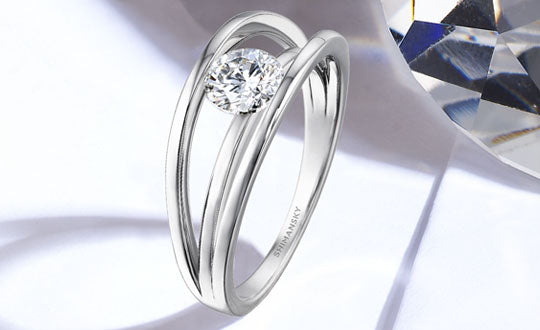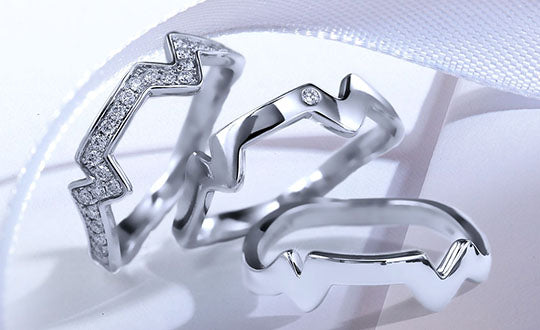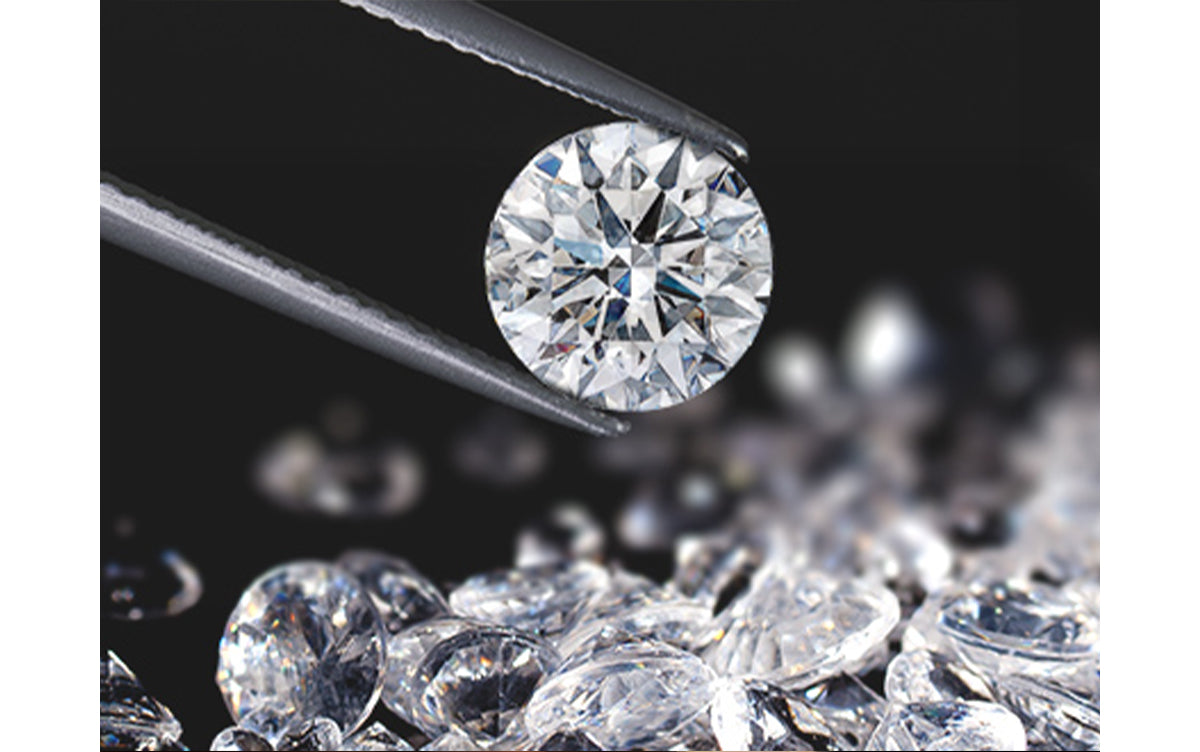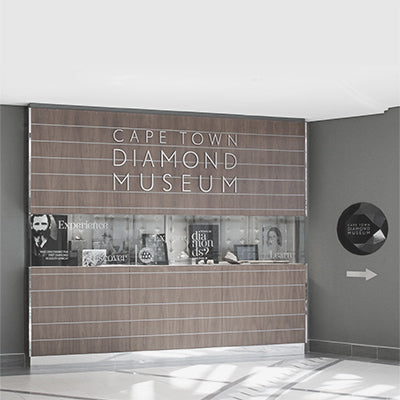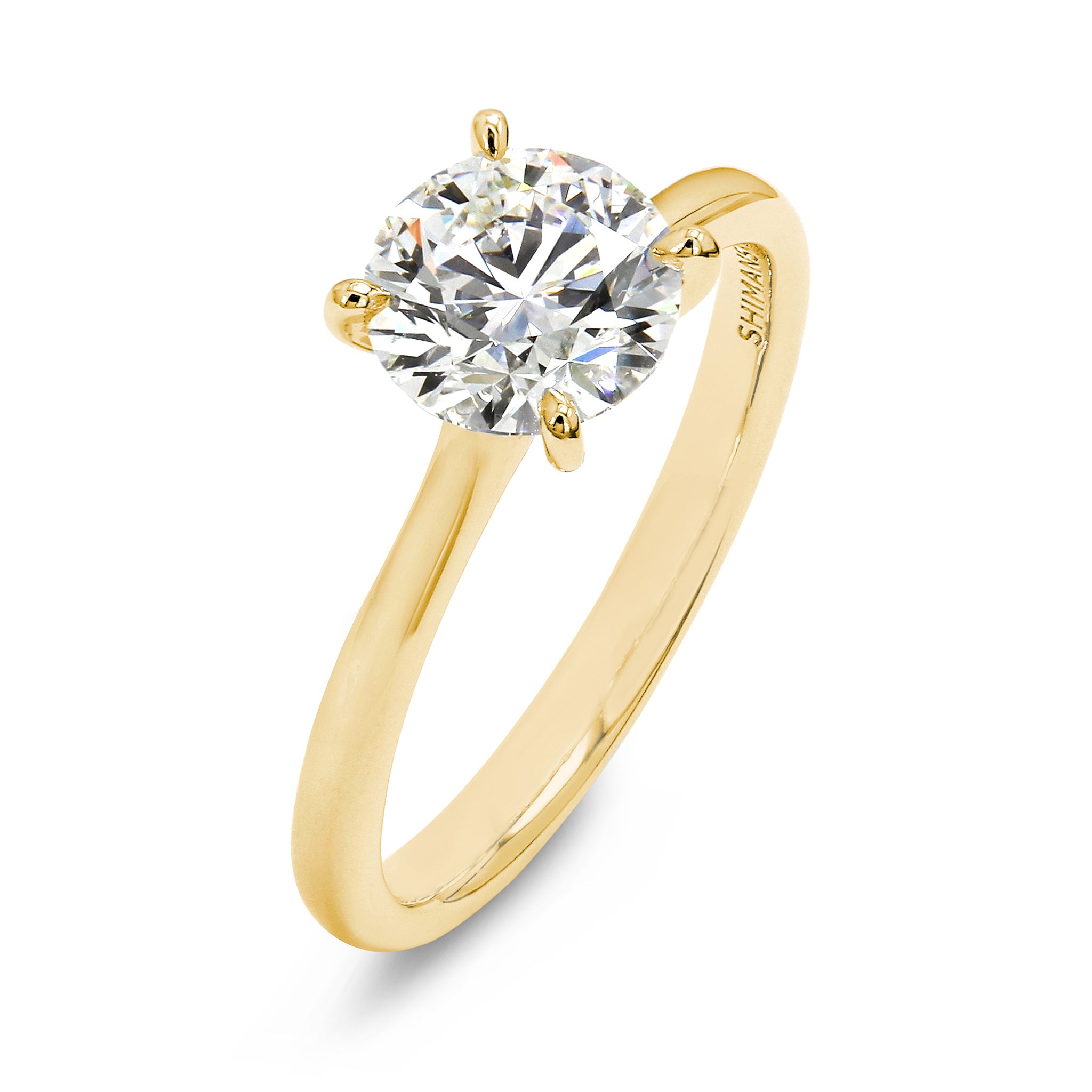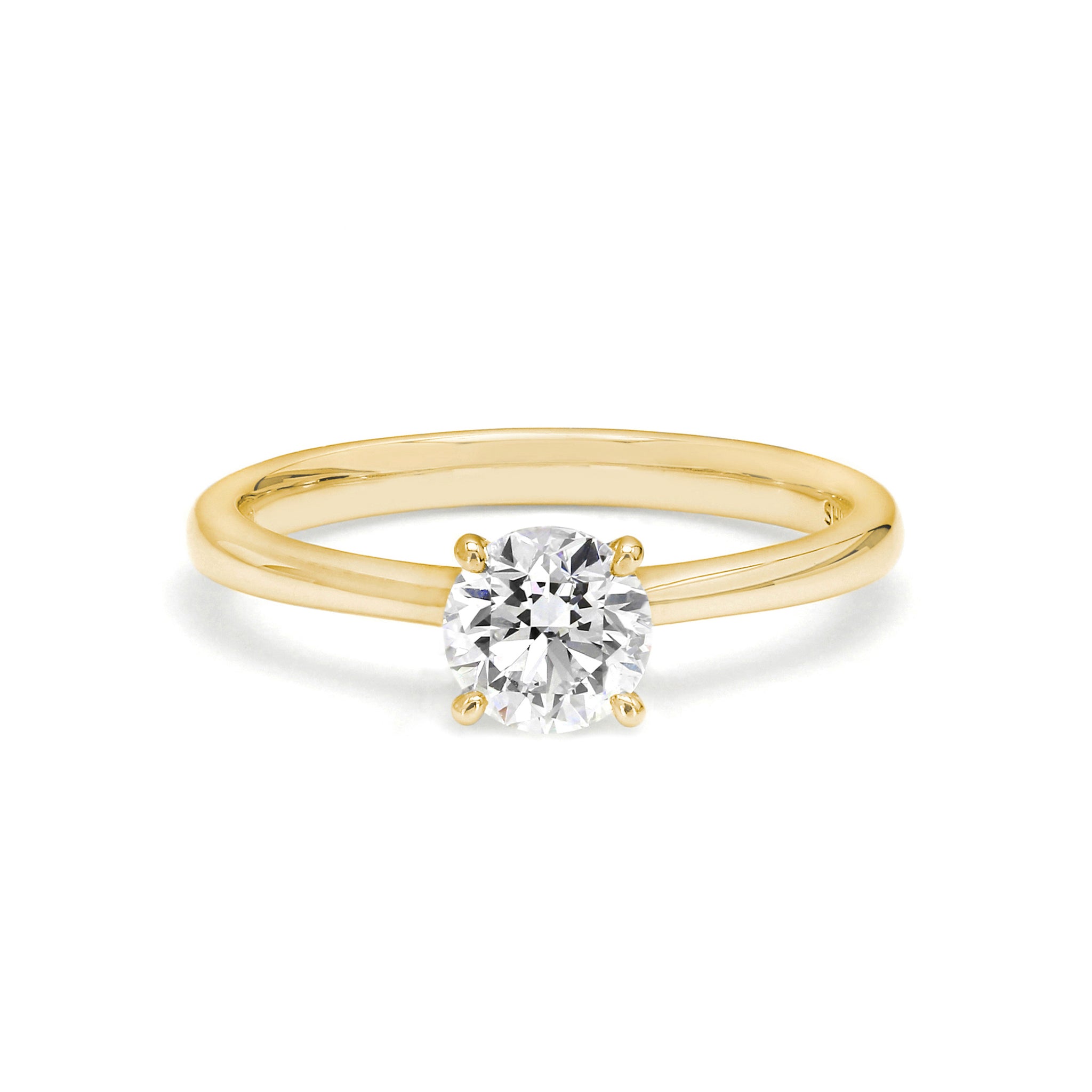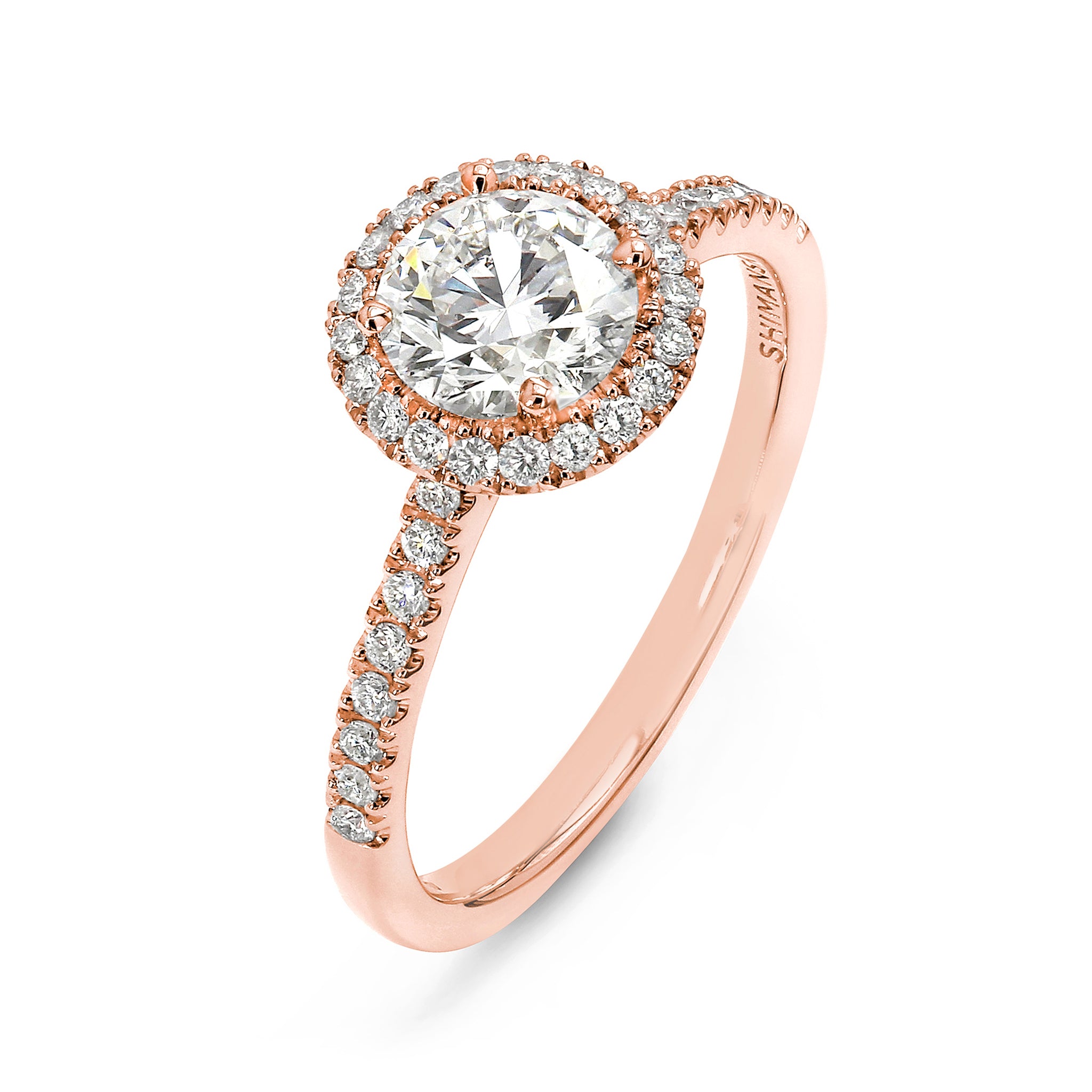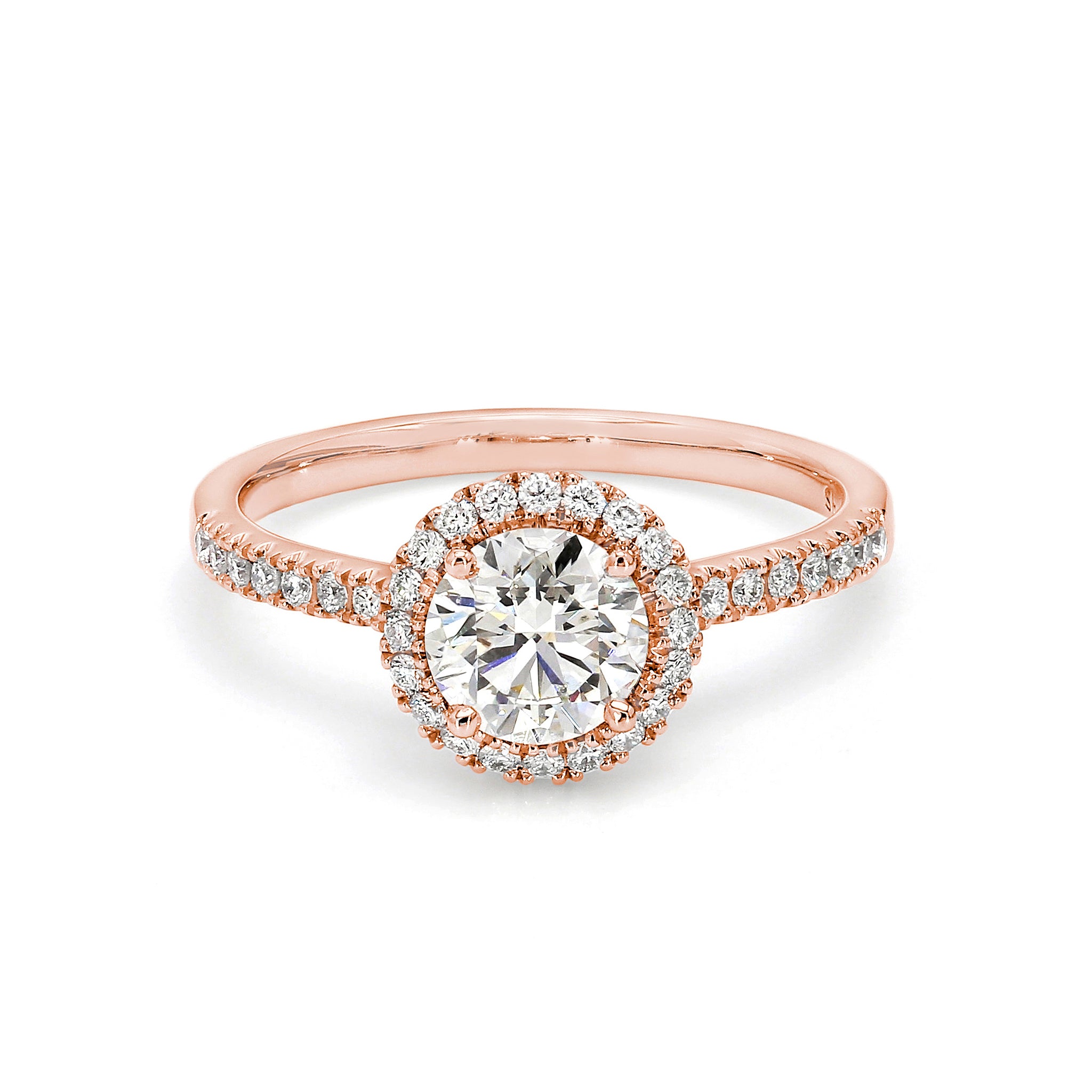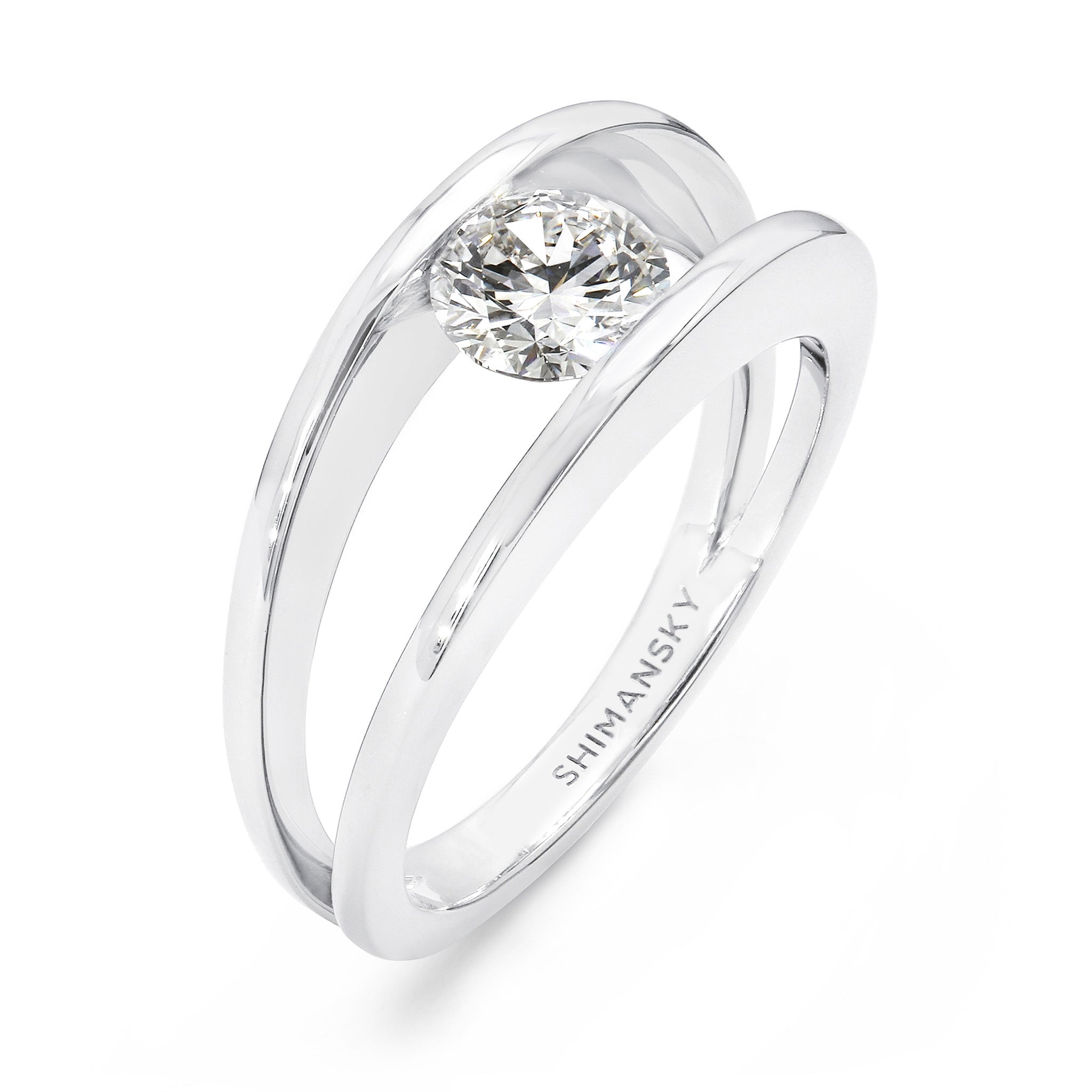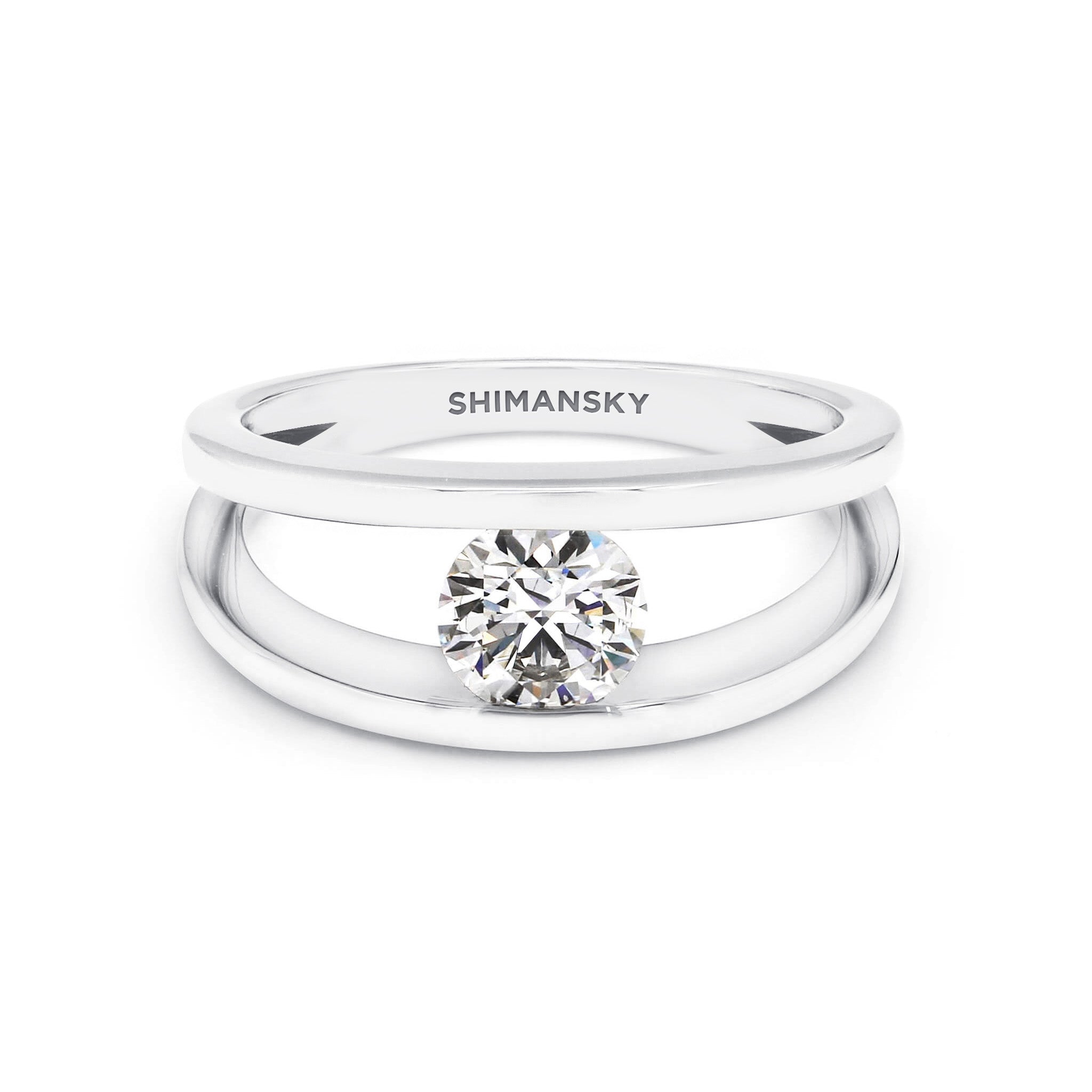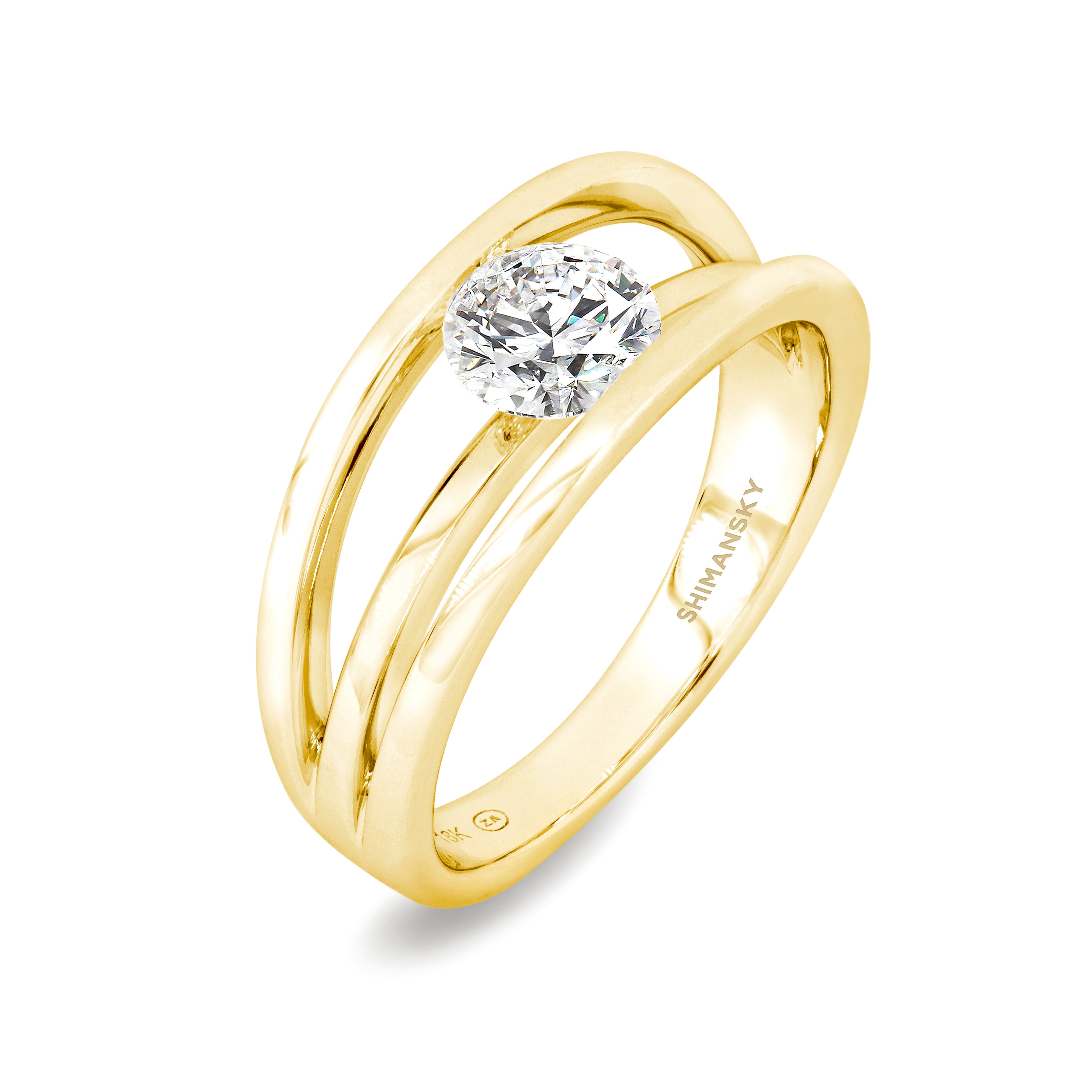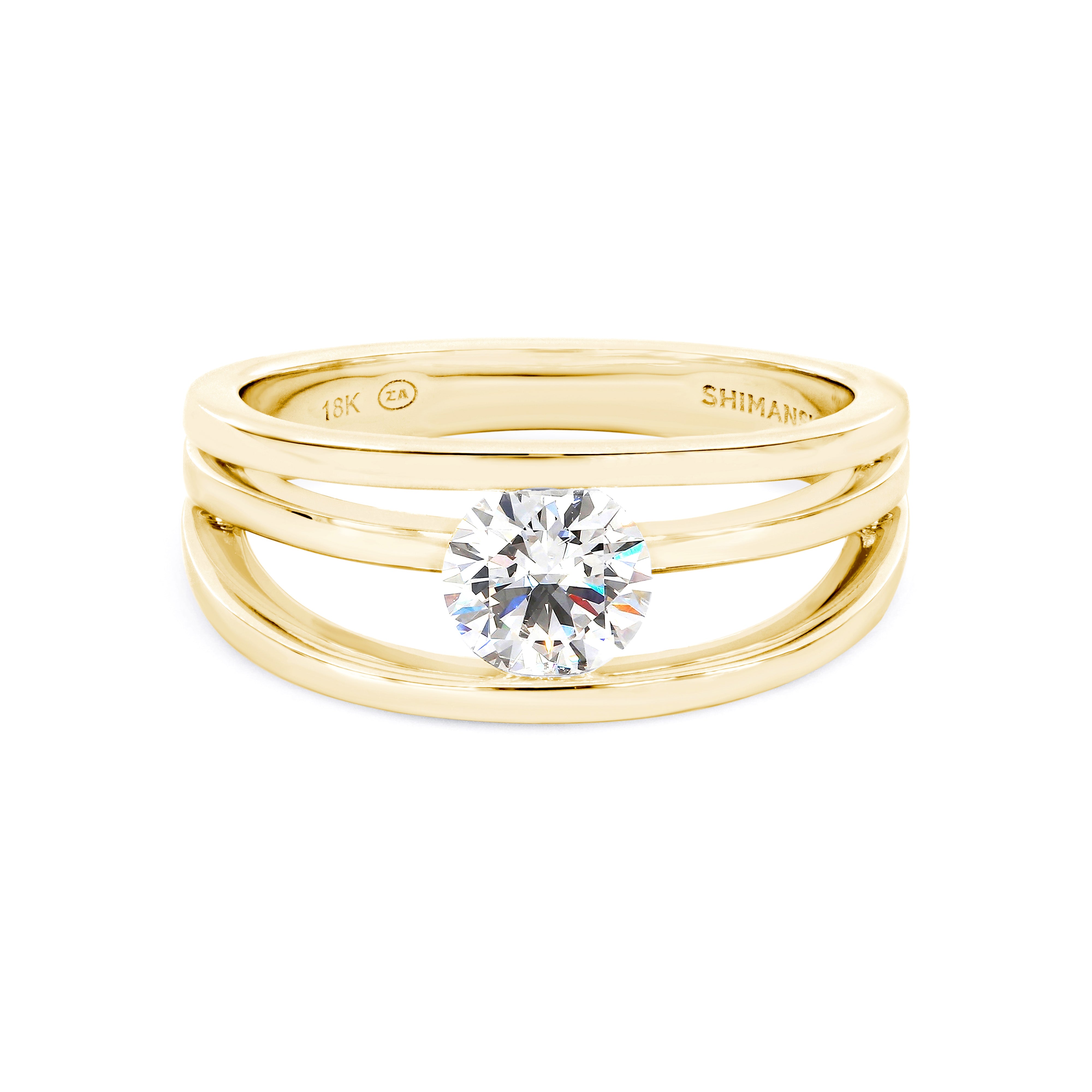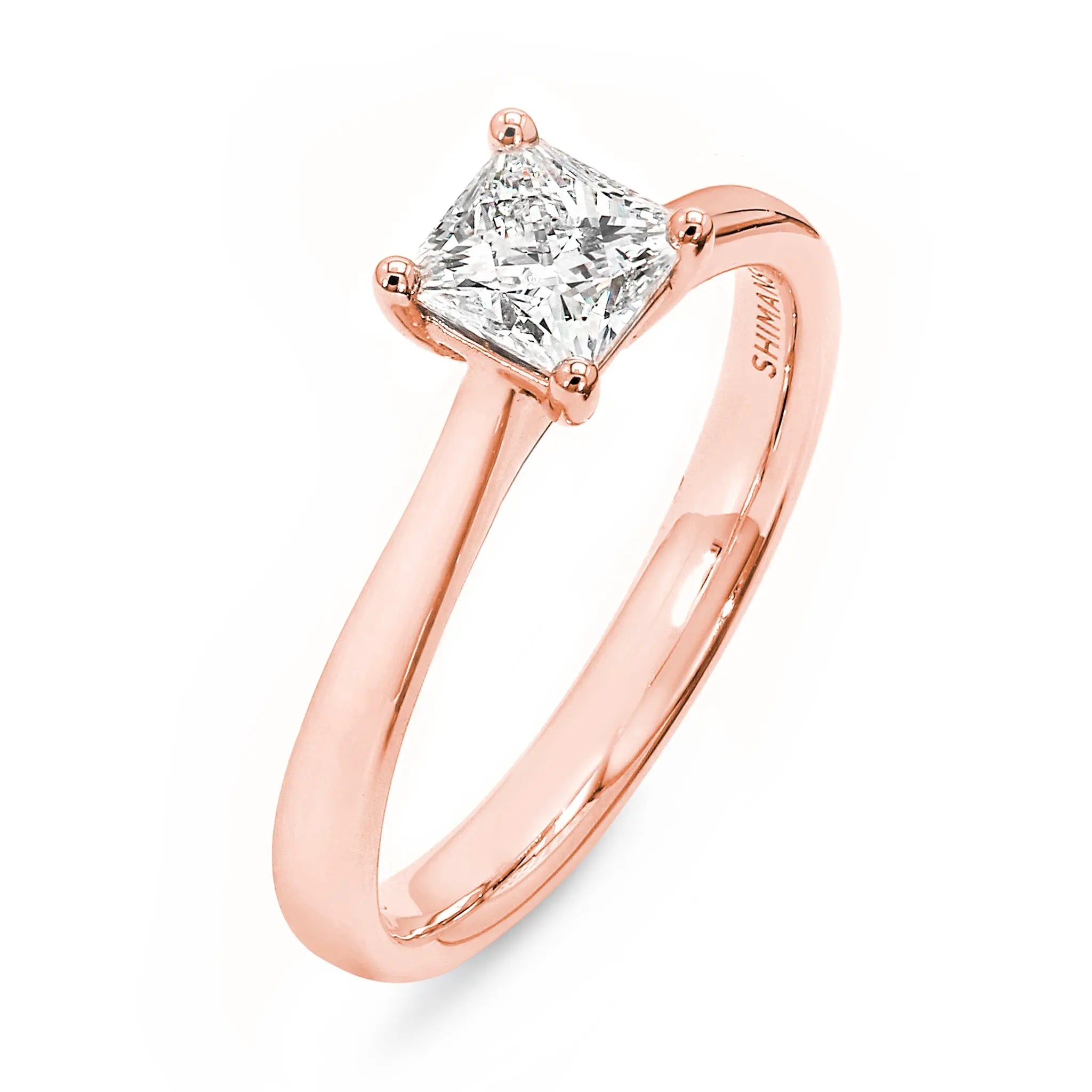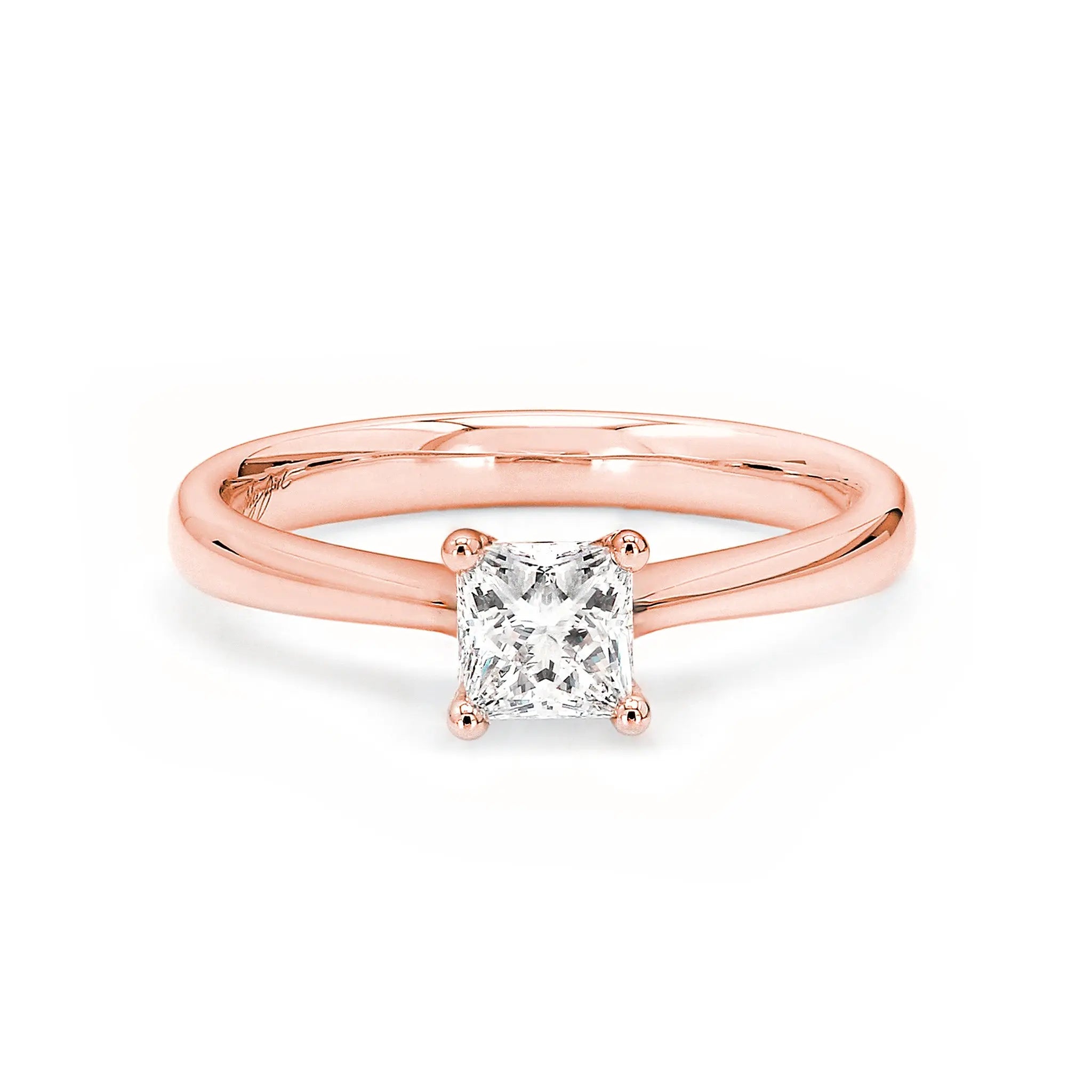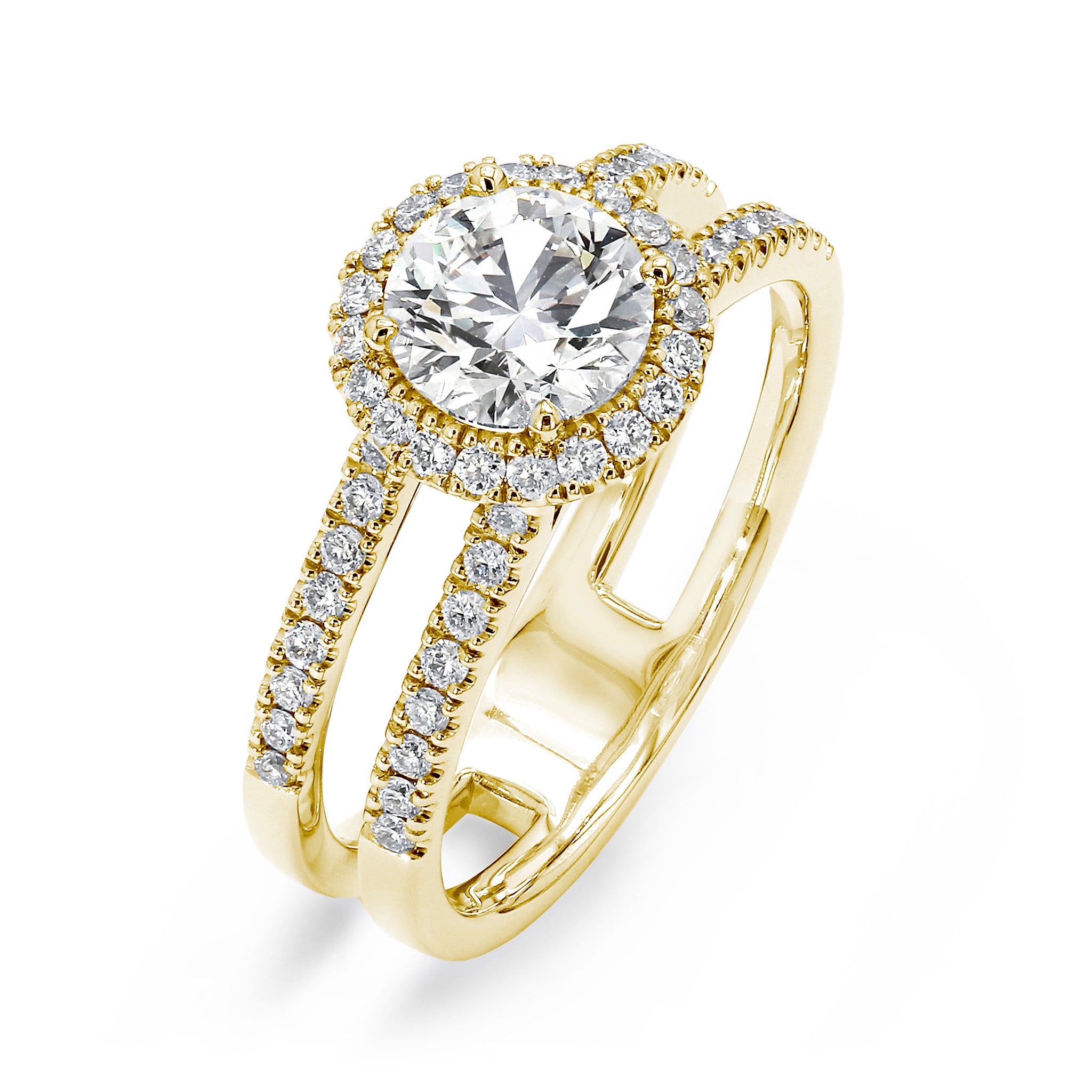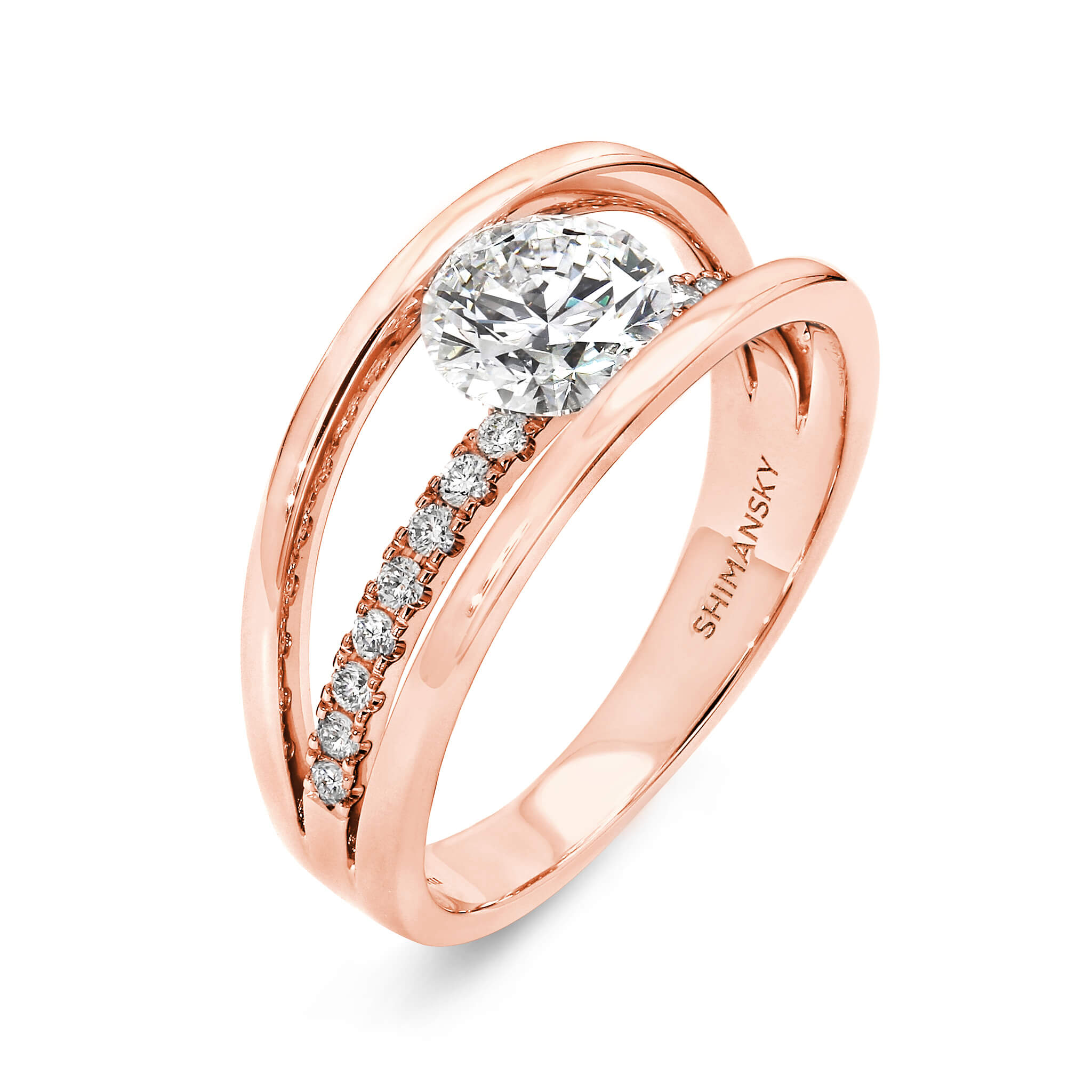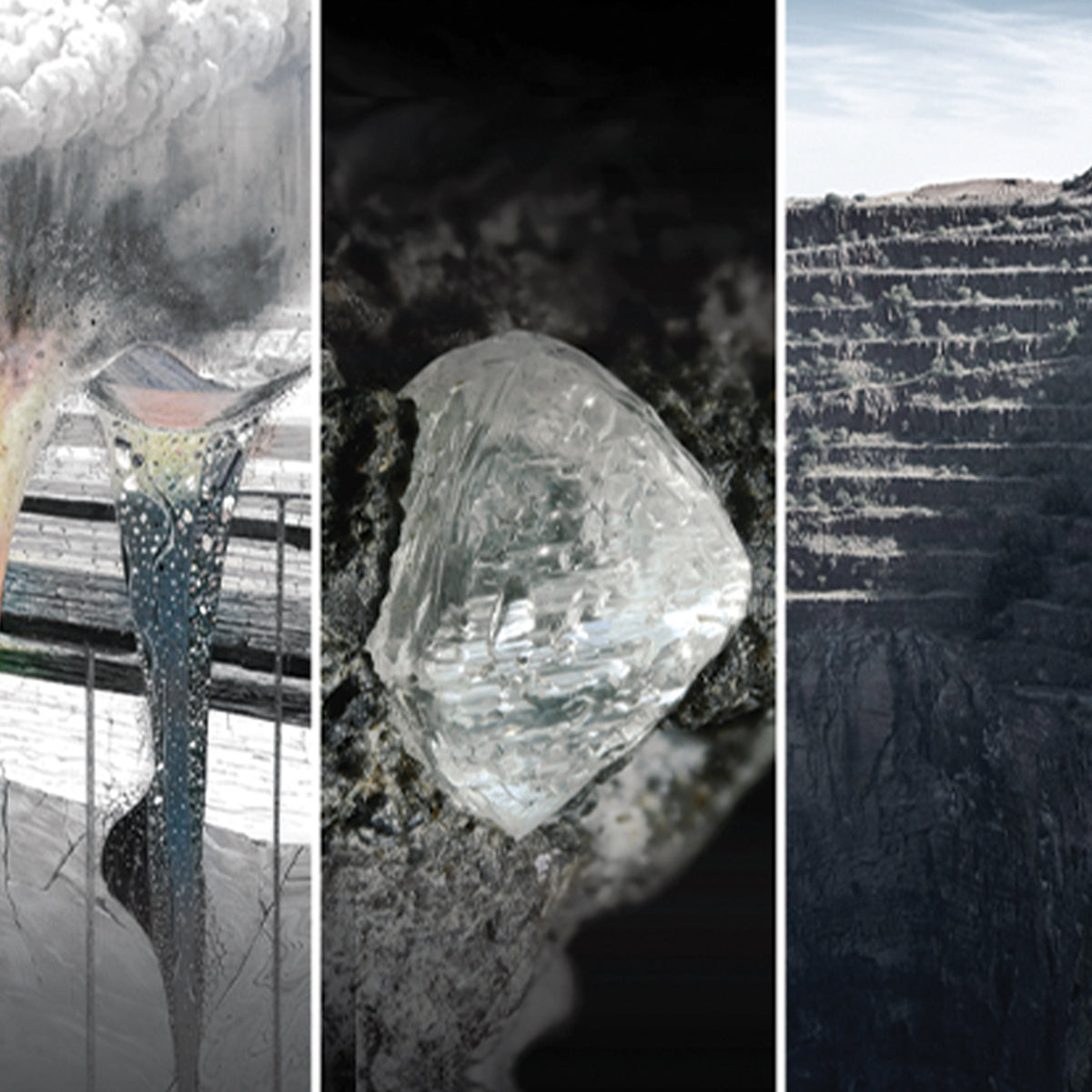
Discover
The formation of diamonds
Diamonds are considered the world’s oldest treasure, having formed over 3.3 billion years ago, 200km below the Earths surface. Under conditions of intense heat (900 to 1,300 degrees Celsius) and pressure (between 45 and 60 kilobars), carbon atoms crystallise, forming diamonds. It takes millions of years for a diamond to form, and geologists believe the most recently formed diamonds may be up to 45 million years old. Variations of temperature and pressure can significantly impact the formation of diamonds, and if the conditions are not ideal, it could result in the dissolution of diamonds.
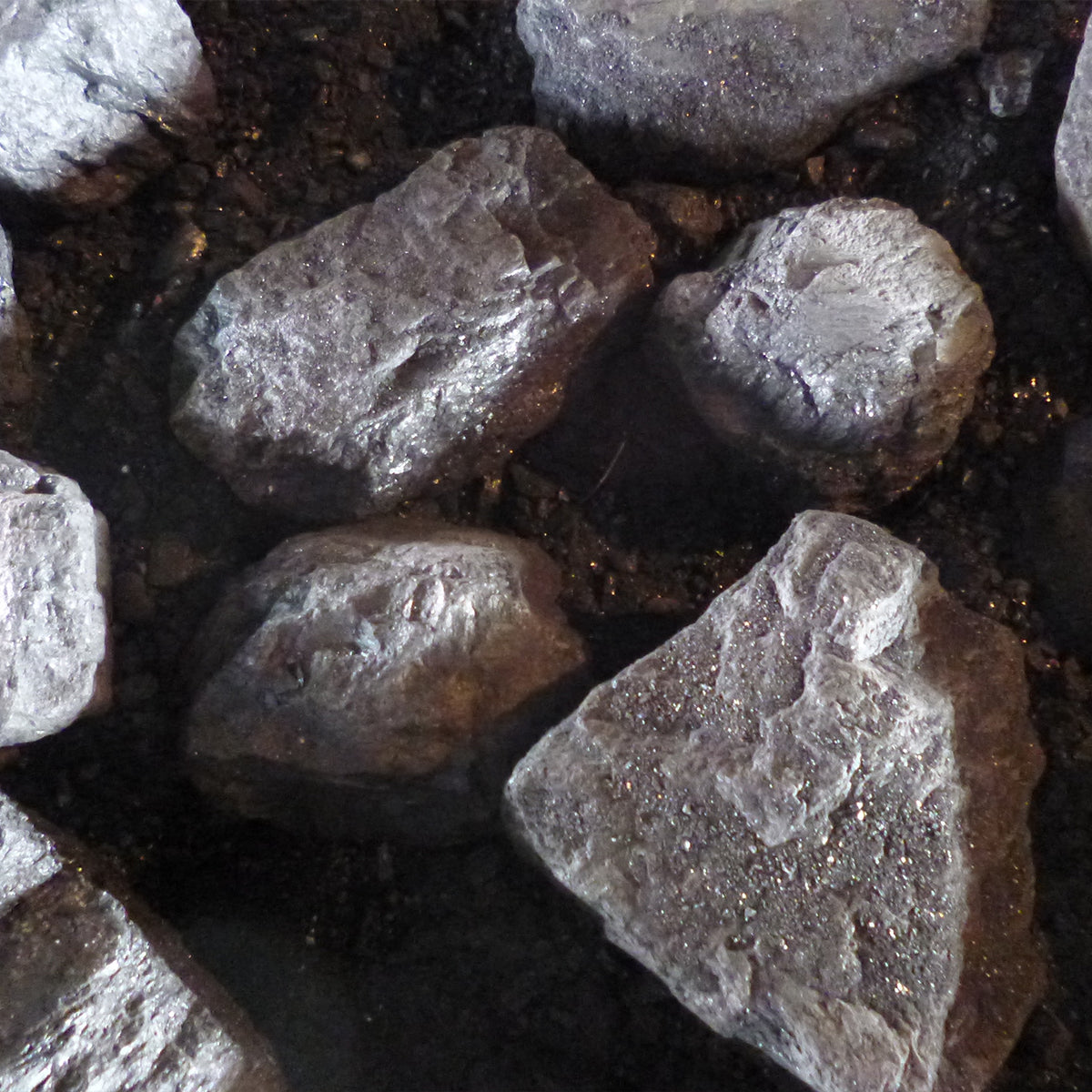
Molten kimberlite (also known as magma) are also formed within the Earths upper mantle under conditions of intense heat and pressure causing it to expand at a rapid rate. This expansion causes the magma to erupt, forcing it into the Earth’s surface and taking along with it the diamond-bearing rocks. These types of “eruptions” have not occurred in recent times, and it is believed that they happened during a time when the Earth was naturally hotter, thus making such eruptions more likely.
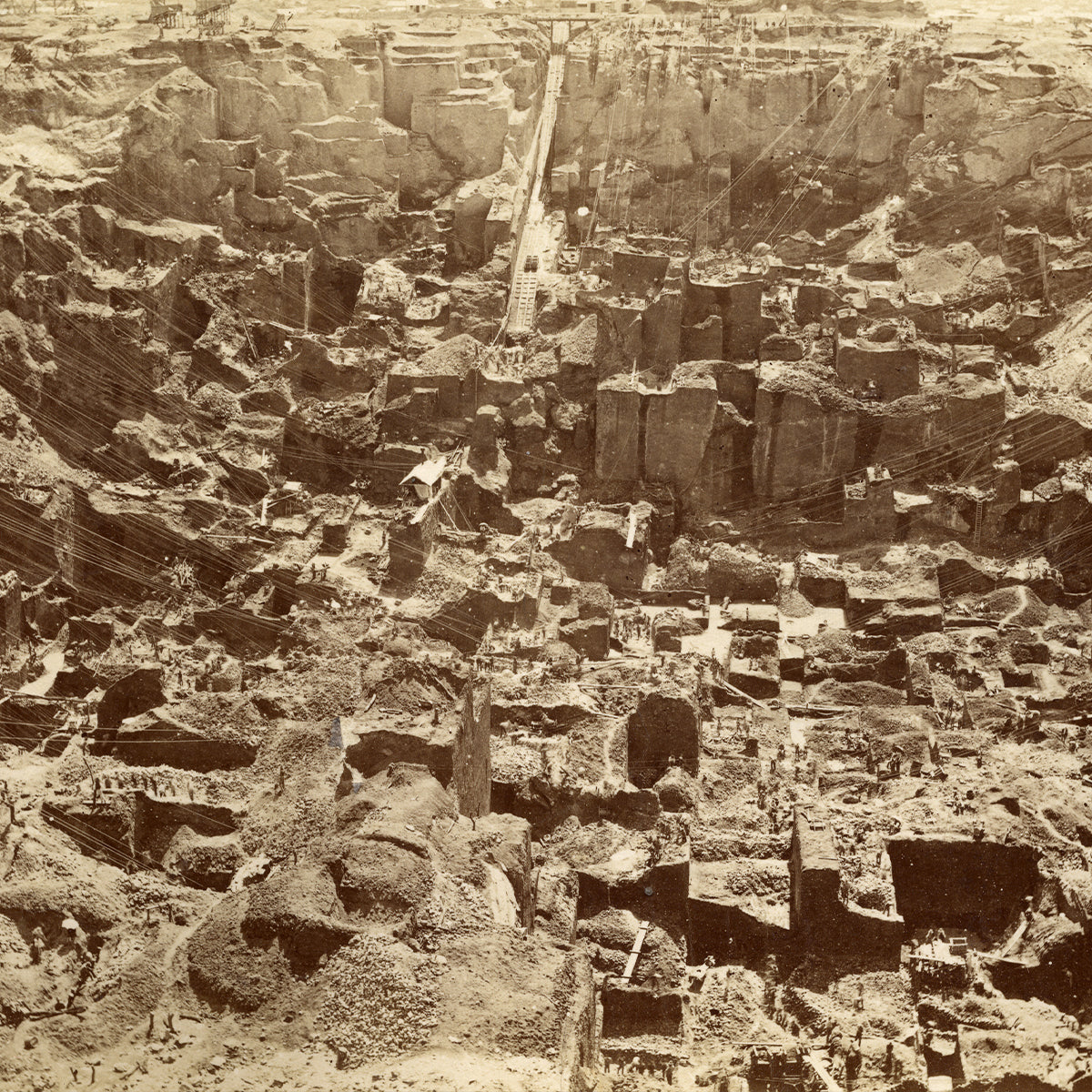
Traveling at an incredible speed, the erupted magma forms a pipe to the surface of the Earth. As the magma cools, it hardens to form a rock called Kimberlite, the most significant source of diamonds. The Kimberlite settles in vertical structures known as Kimberlite pipes.
Kimberlite derives its name from the town of Kimberley in South Africa, where the first diamonds were found in this type of rock. Though Kimberlite pipes are the most significant source of diamonds, it is estimated that only 1 in 200 Kimberlite pipes contain gem-quality diamonds. This is testimony to the rarity of diamonds, and serves as a reminder that a diamond is a unique gift from Mother Nature, unrushed in its formation, and extremely valuable due to its scarcity.
“The beauty of a perfectly cut diamond is not just in its exquisite aesthetics, but in the way it makes you feel,” says Yair Shimansky, founder and CEO of Shimansky.
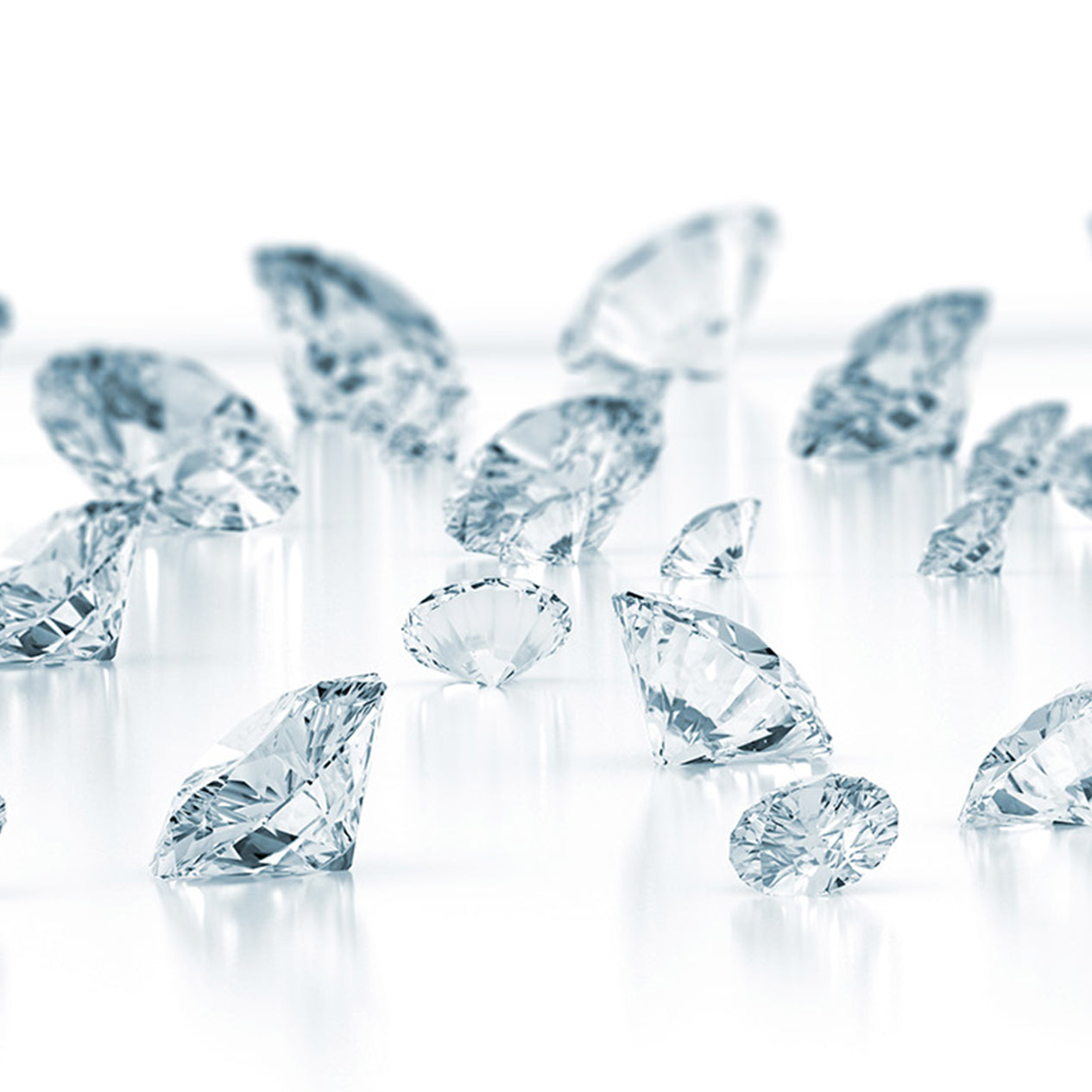
Diamonds are mined by means of various techniques, and on average, 250 tonnes of ore is mined to produce a one carat gem-quality polished diamond.
The Ancient Greeks believed that diamonds were tears from the gods, and that they had mystical and magical properties. Though the perception of diamonds has changed somewhat since then, these precious stones have retained their ability to fascinate all who look at them. With an expert level of skill the Shimansky diamond cutters and polishers bring a rough diamond to life and showcase its brilliance, fire and scintillation – and most importantly to reach its full potential.
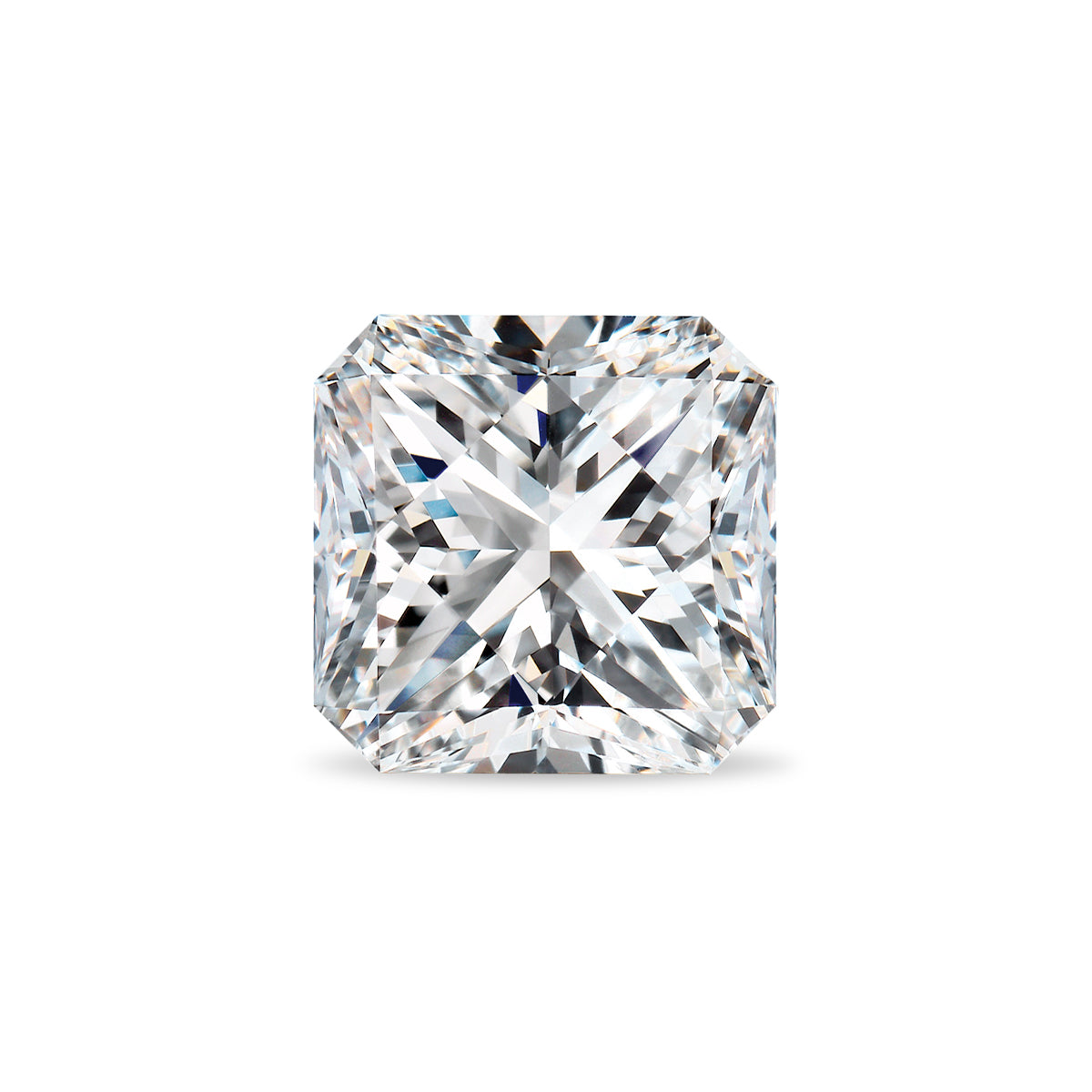
Shimansky is renowned for several signature diamond cuts, such as the My Girl diamond and the Brilliant 10 diamond. The Shimansky My Girl diamond is the world’s first square cut diamond with a diamond-shaped table. One-of-a-kind, it offers the perfect balance of fire, brilliance and scintillation, and as much as half the rough stone is sacrificed to create the spellbinding My Girl cut.
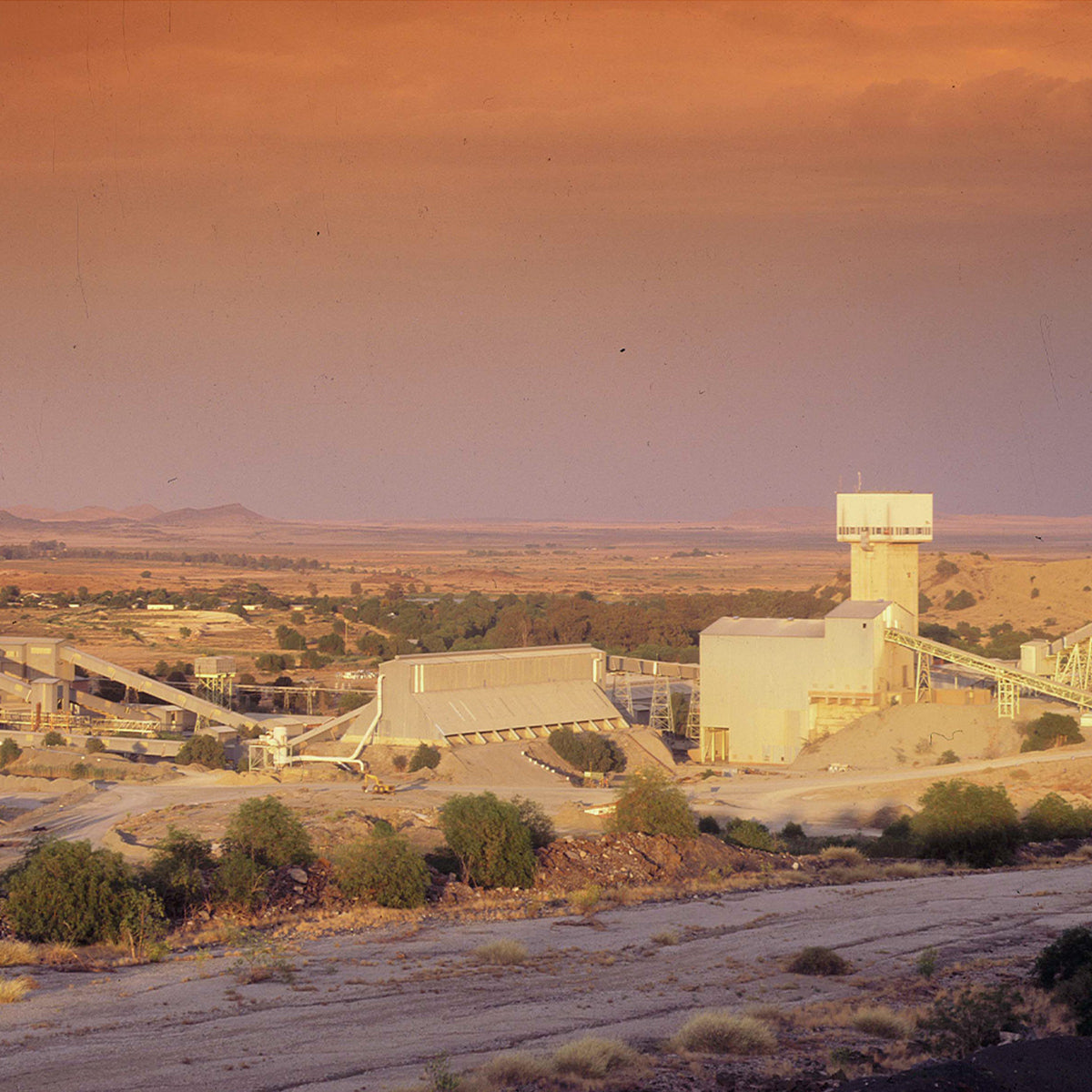
The word “diamond” comes from the Greek word “Adamas,” meaning “indestructible.” The strongest material known to man, a diamond consists purely of carbon, making it the only gem comprising of a single element (it consists of 99.95% carbon). The remaining 0.5% is believed to consist of trace elements, which can have an effect on the colour of a diamond, but are not a part of its chemical structure or molecular make-up. Found in abundance, carbon takes on many forms: the difference between a diamond and a lump of coal, is essentially their molecular structures.
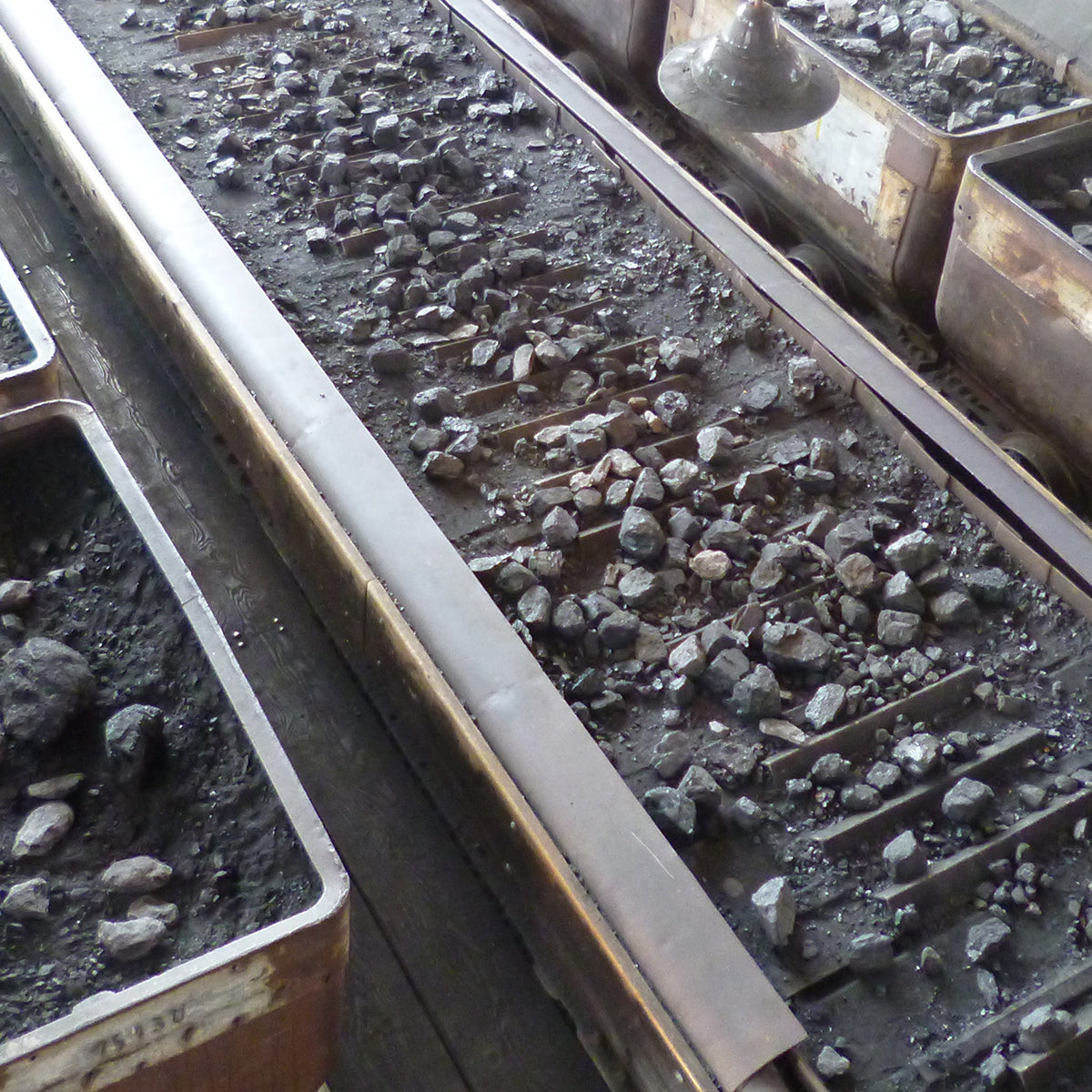
Coal or charcoal has an amorphous structure, and contains organic molecules of decomposed plant and animal matter. Like diamonds, it was also formed deep within the Earth’s crust. Diamonds, however, have a crystalline structure, which resembles the shape of a pyramid. When a diamond is formed, each of its carbon atoms bonds with another four carbon atoms. This means that each atom is essentially participating in four extremely strong covalent bonds. It is as a result of these bonds that diamonds are 58 times harder than any other matter found in nature.
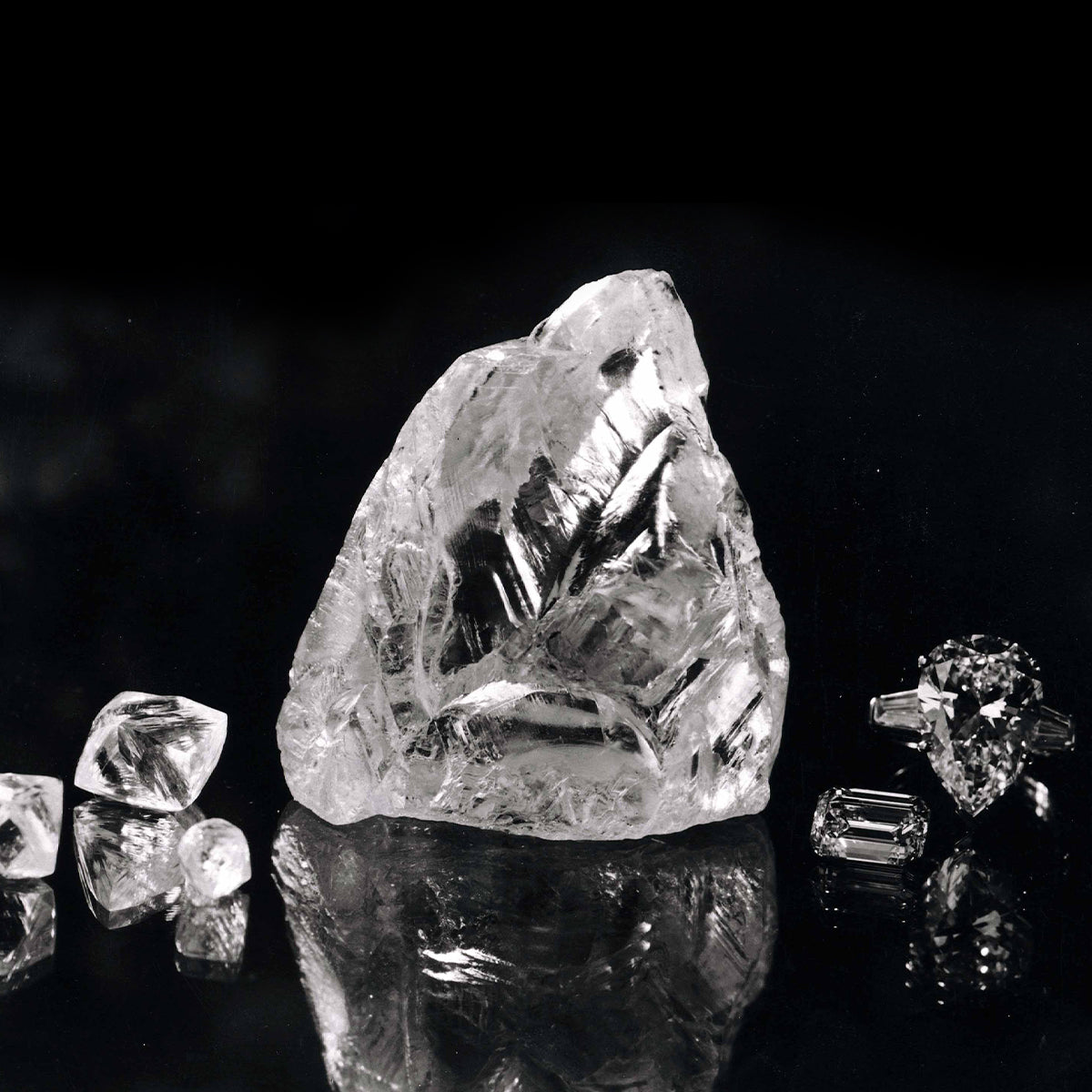
Found in various parts of the world, diamonds are most abundant in Africa, South America and parts of the East. The first diamonds are believed to have been discovered in the rivers and streams of India in as early as the 4th century BC. Brazil became an important diamond source in the 1700s, and it was only in 1867 that diamonds were discovered in Kimberley, South Africa. Today, South Africa is one of the world’s most well-known and bountiful diamond-producing countries.
Shimansky’s expert team can see a diamond’s potential while it is still in its rough form. It takes great precision, skill and attention to detail from our master diamond cutters and polishers for the rough stone to be transformed into a mesmerizing display of light in a jewellery creation. Beautiful and rare, a diamond’s unique journey of formation gives it its unique qualities, as well as its ability to shine with unrivaled brilliance. The most precious gem of all, a diamond’s journey from the core of the Earth, to the finger of the one it was meant for, is not only fascinating, but magical.
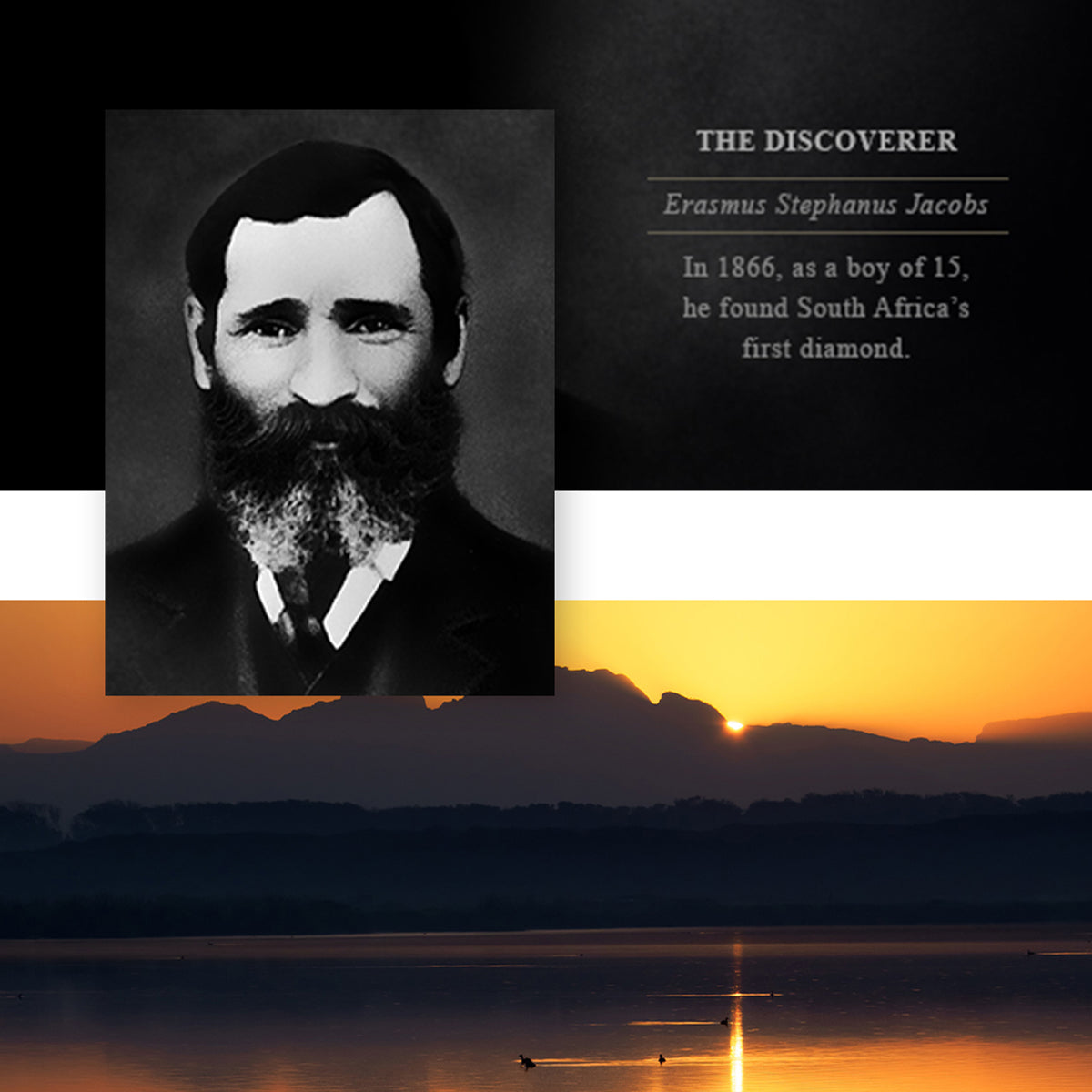
Discover
The history of diamonds in South Africa
The discovery of diamonds in South Africa played a pivotal role in the world’s diamond history. Before diamonds were discovered in Kimberley, they were extremely rare, and were only found in small quantities in India and Brazil. Today, South Africa continues to be one of the world’s major producers, and it is estimated that up to 65% of the world’s diamonds were mined from an African mine.
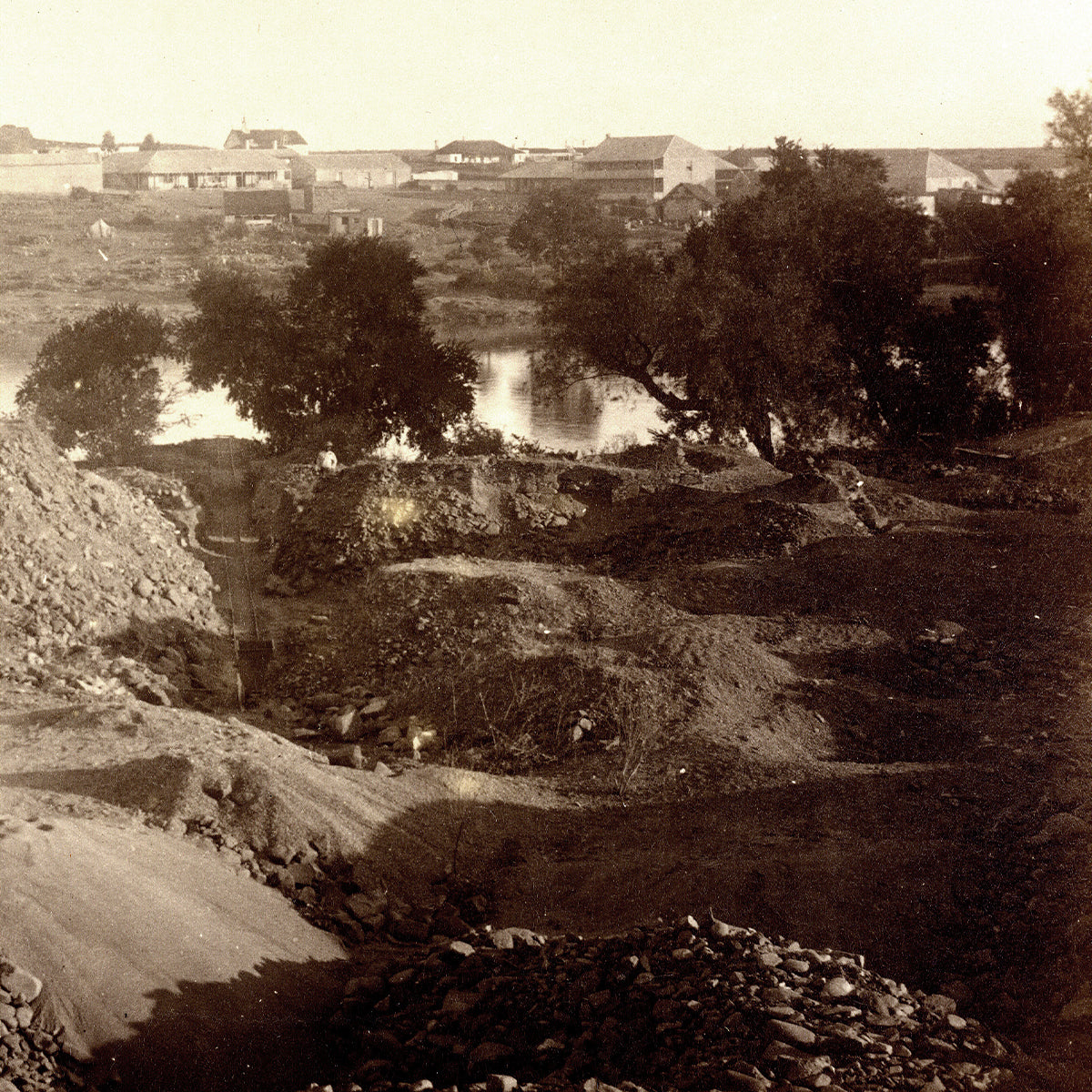
The first diamond discoveries in South Africa were alluvial, meaning they were found as deposits along a river bed. In 1867, a 15-year-old boy named Erasmus Jacobs found a small transparent rock along the banks of the Orange River, near his farm where he lived with his family. Erasmus showed the stone to his father, who in turn showed it to a neighbourhood farmer, Schalk van Niekerk. Van Niekerk found the stone to be very intriguing and offered to buy it from the Jacobs family. Not realising its value, he sent it, via ordinary mail, to Grahamstown, where Dr. William Guybon Atherstone confirmed that it was a 21.24 carat diamond. It was named the Eureka Diamond, and is the single most important diamond in the history of South Africa.
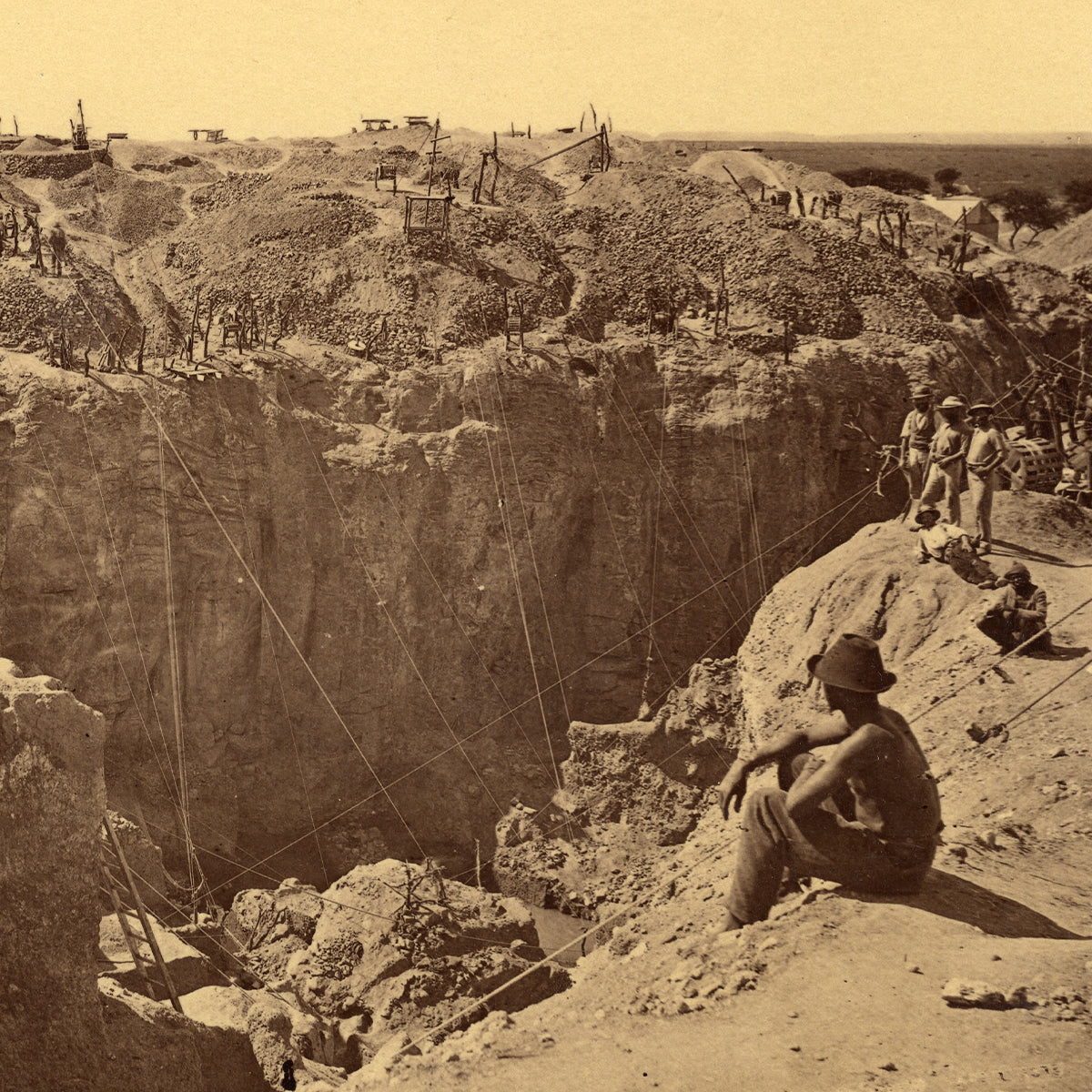
A few years later, Johannes Nicolaas de Beer and his brother Diederik Arnoldus De Beer, two Dutch settlers, discovered diamonds on their farm. The discovery led to a diamond rush, with people from various parts of South Africa intruding on their land in the hope of finding their very own diamonds. Unable to protect their land from the masses of people flocking upon it, they decided to sell their property. Although the brothers did not become the owners of diamond mines, their name, De Beers, was given to one of the mines, and today, the De Beers name is still synonymous with the diamond industry worldwide.
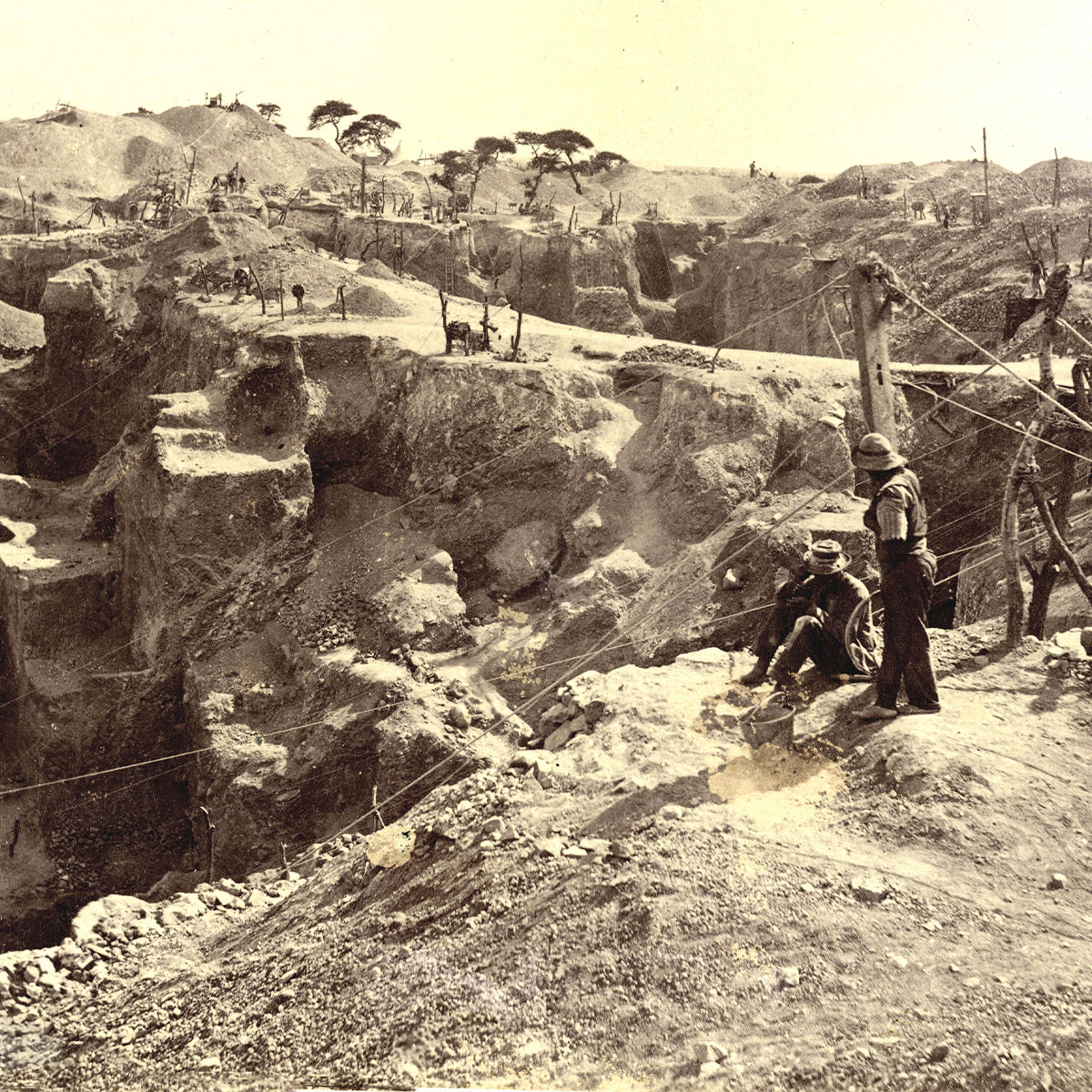
These events led to the Great Kimberley Diamond Rush, where people from all over the world gathered in Kimberley to make money mining diamonds in South Africa. More than 22 million tonnes of earth was removed from what is now known as “The Big Hole” in Kimberley, and approximately three tonnes of diamonds were removed.
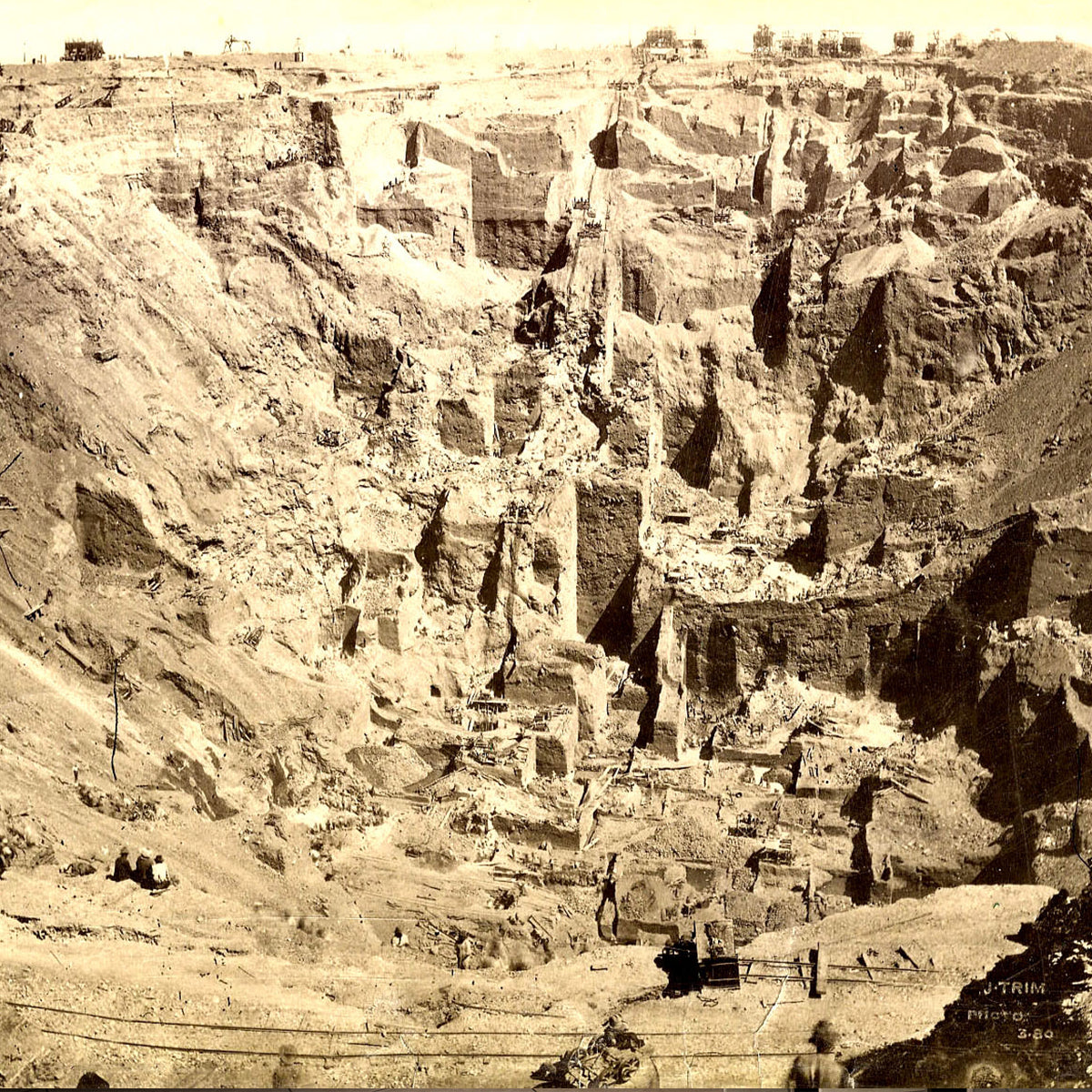
Kimberley was home to great wealth, and many great rivalries in the 1870s and 1880s. The most notable of these rivalries was that between Cecil John Rhodes and Barney Barnato, who were English immigrants. Both men were the owners of their own companies, and at one stage, both owned shares in the same company. They battled for stock, and in 1888 Rhodes triumphed and merged the holdings of all his diamond companies to form one of the world’s leading diamond mining groups called De Beers Consolidated Mines. Today, De Beers is one of the world’s most successful and well-known companies, and has monopoly over the global diamond industry.
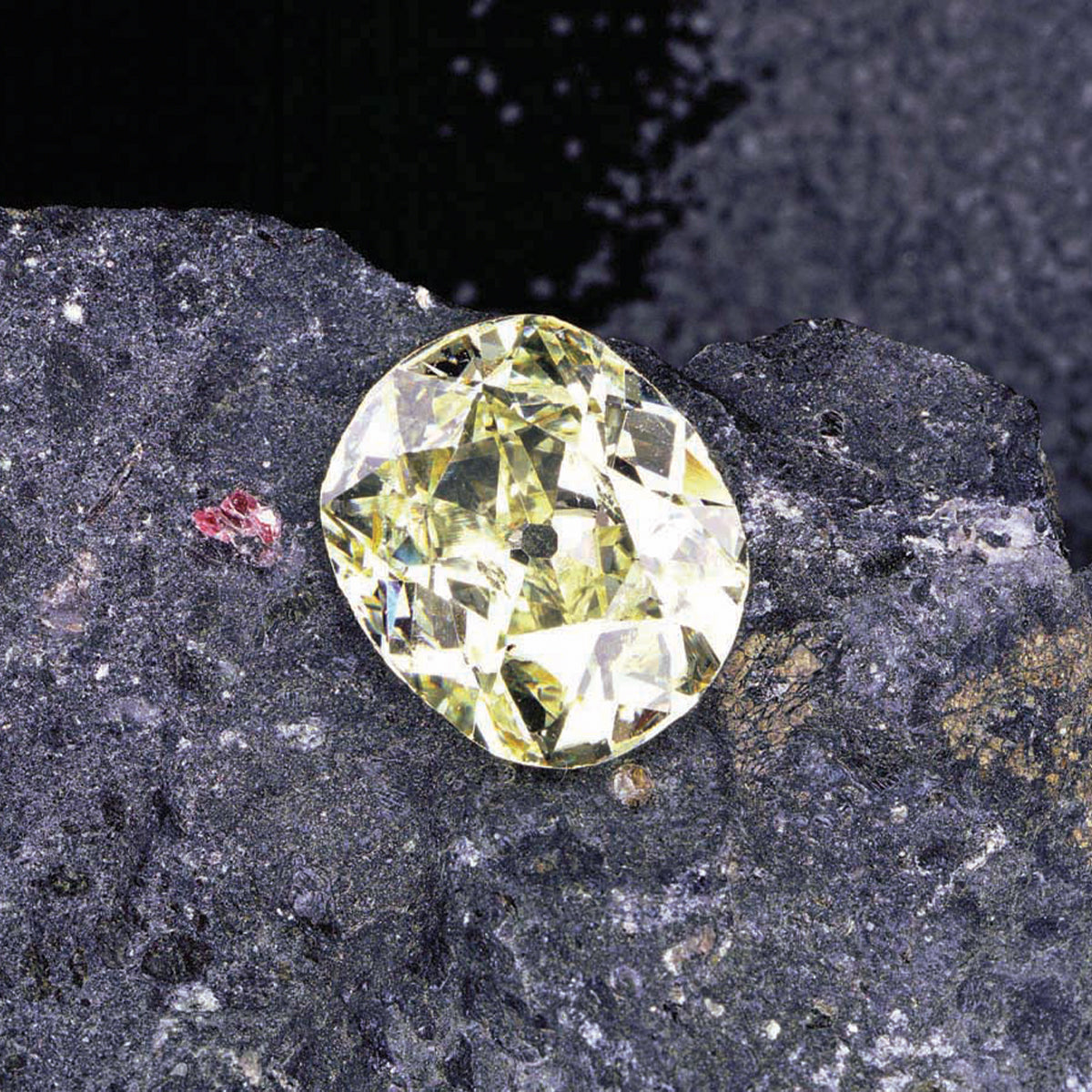
The Eureka diamond exchanged many hands before it was finally purchased by De Beers, who donated the Eureka to the people of South Africa. It is currently on display at the Kimberly Mine Museum in South Africa.
The first diamond discoveries in South Africa were alluvial, meaning they were found as deposits along a river bed. In 1867, a 15-year-old boy named Erasmus Jacobs found a small transparent rock along the banks of the Orange River, near his farm where he lived with his family. Erasmus showed the stone to his father, who in turn showed it to a neighbourhood farmer, Schalk van Niekerk. Van Niekerk found the stone to be very intriguing and offered to buy it from the Jacobs family. Not realising its value, he sent it, via ordinary mail, to Grahamstown, where Dr. William Guybon Atherstone confirmed that it was a 21.24 carat diamond. It was named the Eureka Diamond, and is the single most important diamond in the history of South Africa.
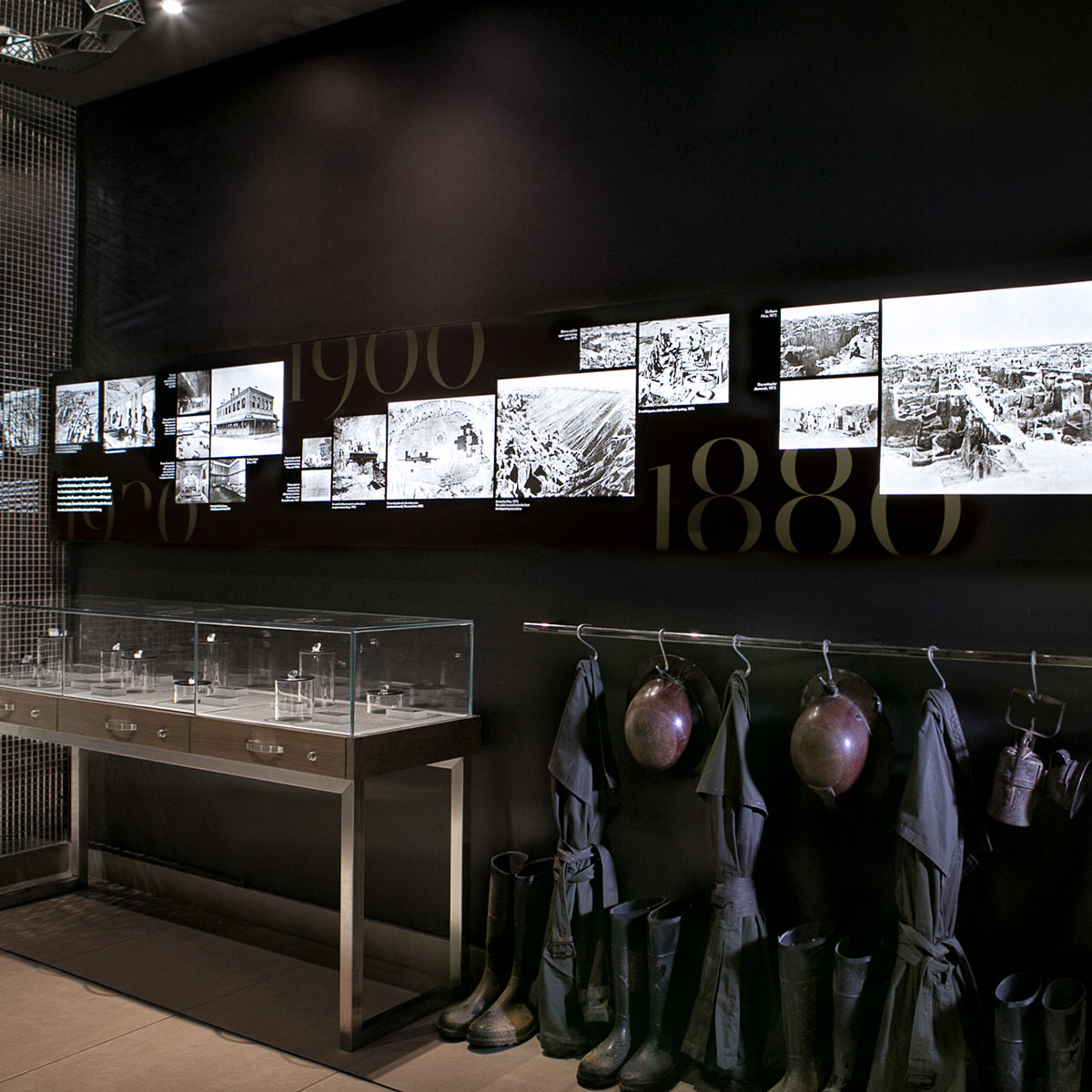
Diamonds in South Africa have a history of almost 150 years, and their discovery in Kimberley made them readily available to the Western World. Diamond mines are a great contributor to the South African economy. There are mines in five of the country’s nine provinces, and thousands of local workers are employed to extract them. The diamond industry continues to be one of the country’s most lucrative industries, and it played a major role in South Africa becoming one of the most economically successful countries in Africa.
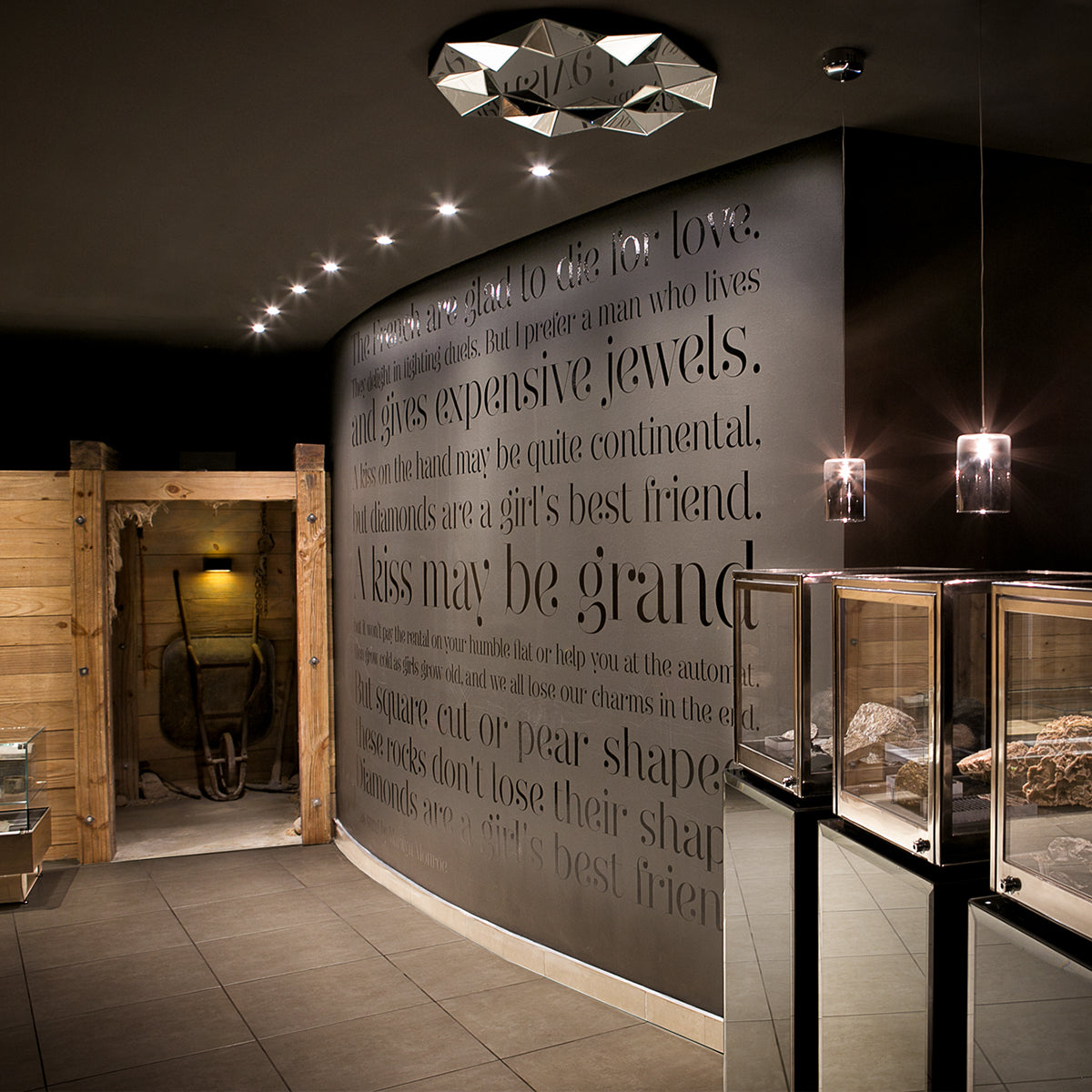
Explore the tale of the South African diamond industry on a personally guided Shimansky Diamond Experience Tour. Discover some of the great names in diamond history, including Cecil John Rhodes, Barney Barnato and the Oppenheimer family.
The tour also pays homage to the most famous South African diamonds, such as the great Cullinan rough diamond and showcases specimens of Kimberlite rock dating billions of years old. Life-size replicas of the famous diamonds that have adorned royalty, the rich and the famous are also on display.
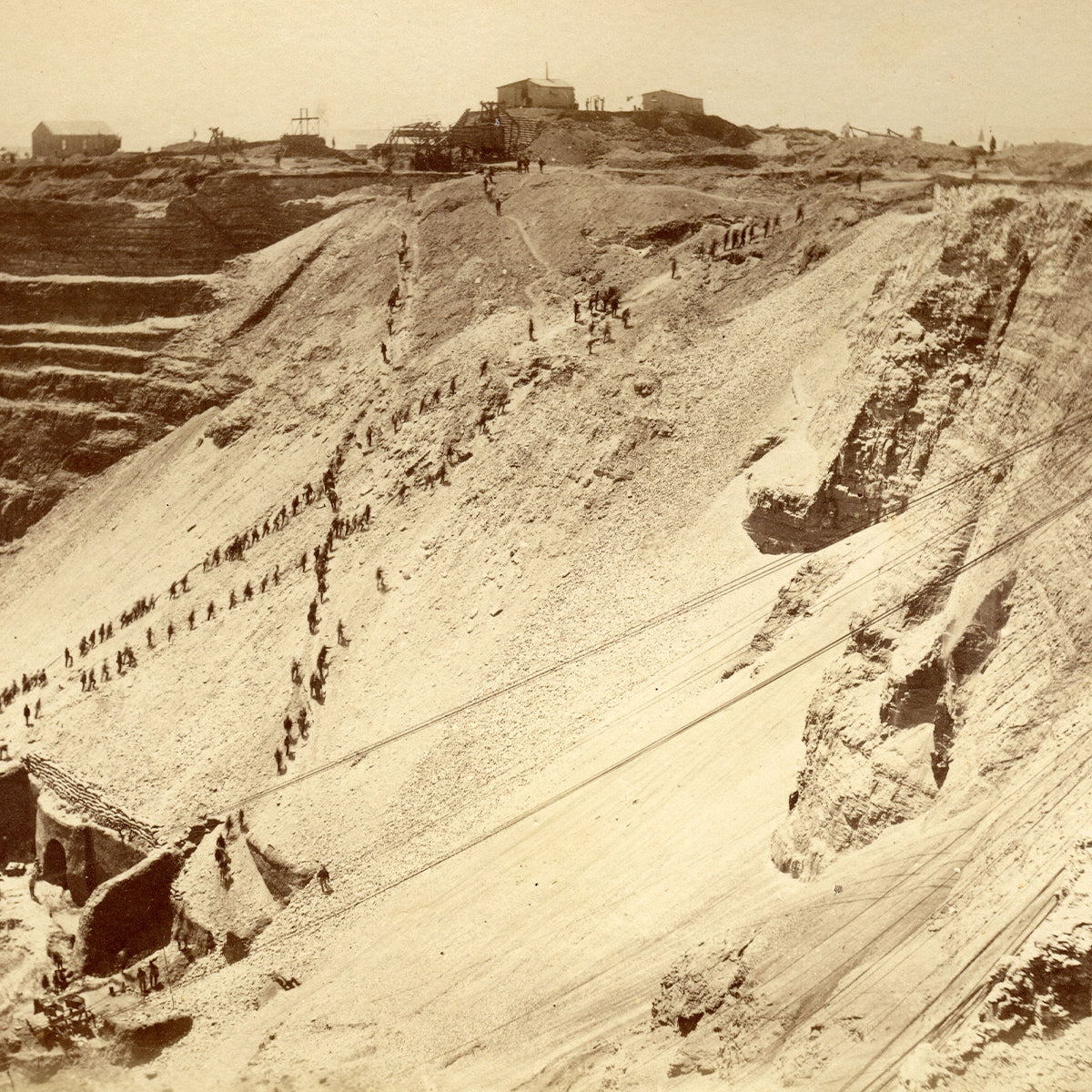
Discover
Mining of Diamonds
PIPE MINING
There are two types of pipe mining: open-pit mining and underground mining.
OPEN-PIT MINING - Open-pit mining, such as the Kimberley Big Hole, involves removing the layers of sand and rock found just above the Kimberlite. The ore in the pit is then broken up by blasting. Once this ore is broken, it is loaded and then transported to a primary ore crusher where the diamond extractor process begins.
UNDERGROUND MINING - Miners tunnel through the Earth’s crust to reach the kimberlite pipe. Tunnels are constructed in two levels, one above the other with funnels built to connect the two. Mining begins on the top level by blasting ore, which falls through the funnels and collects on the second tunnel. Here, loaders collect the broken ore and bring back to the surface for processing.

Alluvial Mining
After thousands of years of wind and rain, the Kimberlite pipe that reaches the Earth’s surface gets eroded. Rough diamonds from the Kimberlite get carried downstream in rivers and streams. These diamonds are often found in the gravel layer of other material such as mud, clay and underwater plant life. The Industrial alluvial process involves building a large wall to collect the water in one area, where the gravel is collected and then hauled to the surface and prepared for processing.

Maring Mining
Marine mining involves extracting diamonds from the seabed, deep under water. Ships with specialised technology are used to mine for diamonds deep out at sea by using a powerful crawler that sucks gravel on the seabed up through flexible hoses or pipes. In the earlier days of marine mining, a swimmer would collect diamond bearing gravel from the shallow seabed.Alternatively, they use a large scale drill mounted to the ship to excavate diamonds. The coast of Namibia is the richest known source of marine diamond deposits which account for approximately 64% of Namibia's total diamond production.
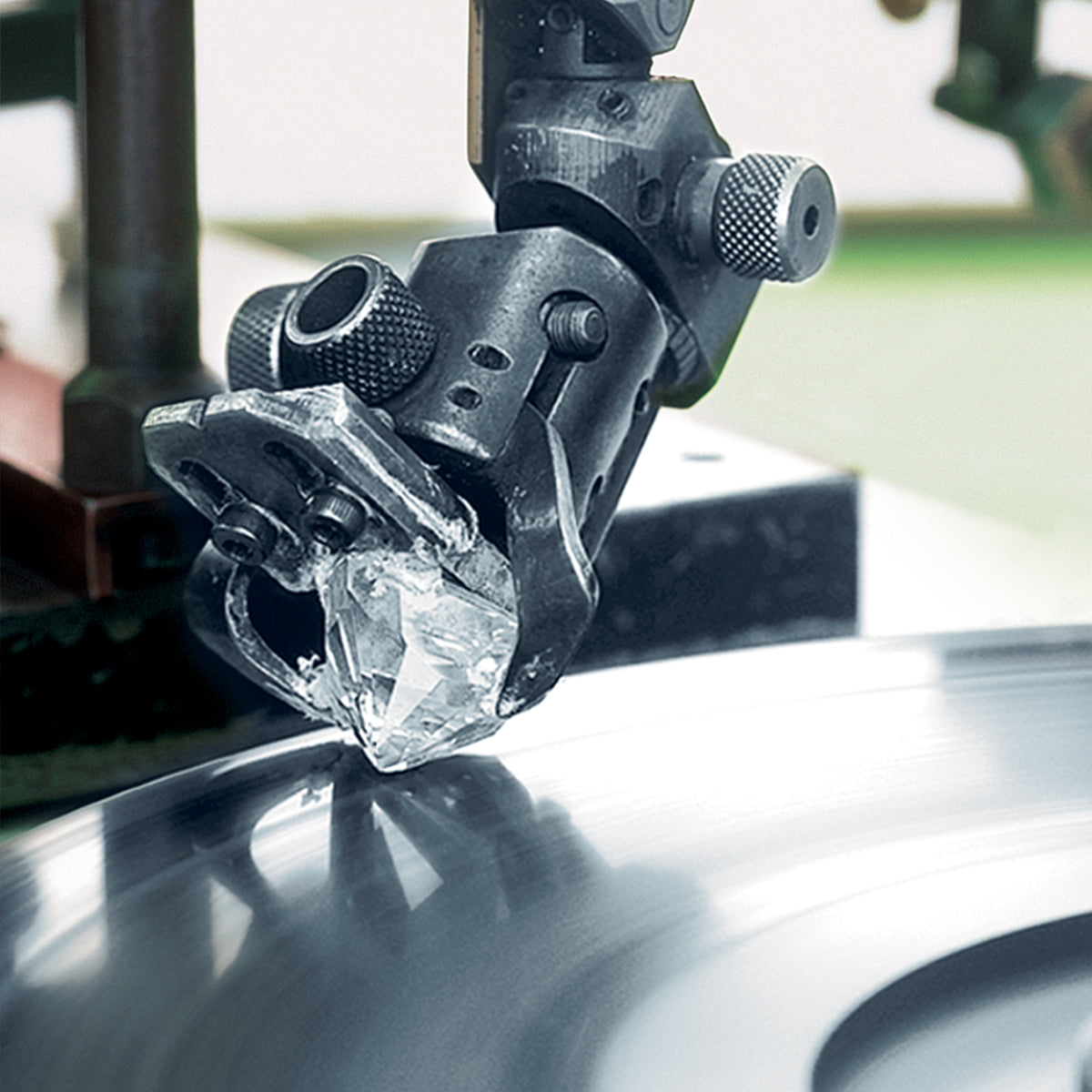
Discover
Cutting & polishing of diamonds
A diamond is a tangible tribute to unforgettable moments. In its rough form it has potential, its size simply a promise of what it might be. Only in the hands of master craftsmen does a diamond realise its true potential.
With a license to purchase diamonds in the rough, each rough stone is carefully selected by Shimansky and polished to perfection to release its true brilliance.
Diamond cutting and polishing is the process of transforming a rough diamond into a brilliant, faceted display of light. It is an art that the Shimansky craftsmen have mastered, and in addition, it is an exact science that requires intense precision, attention to detail and state-of-the-art technology. It takes years of experience and training to acquire the skills needed for this process, as every facet must be perfectly aligned in order to ensure the mesmerising brilliance and sparkle that you see in every Shimansky diamond.
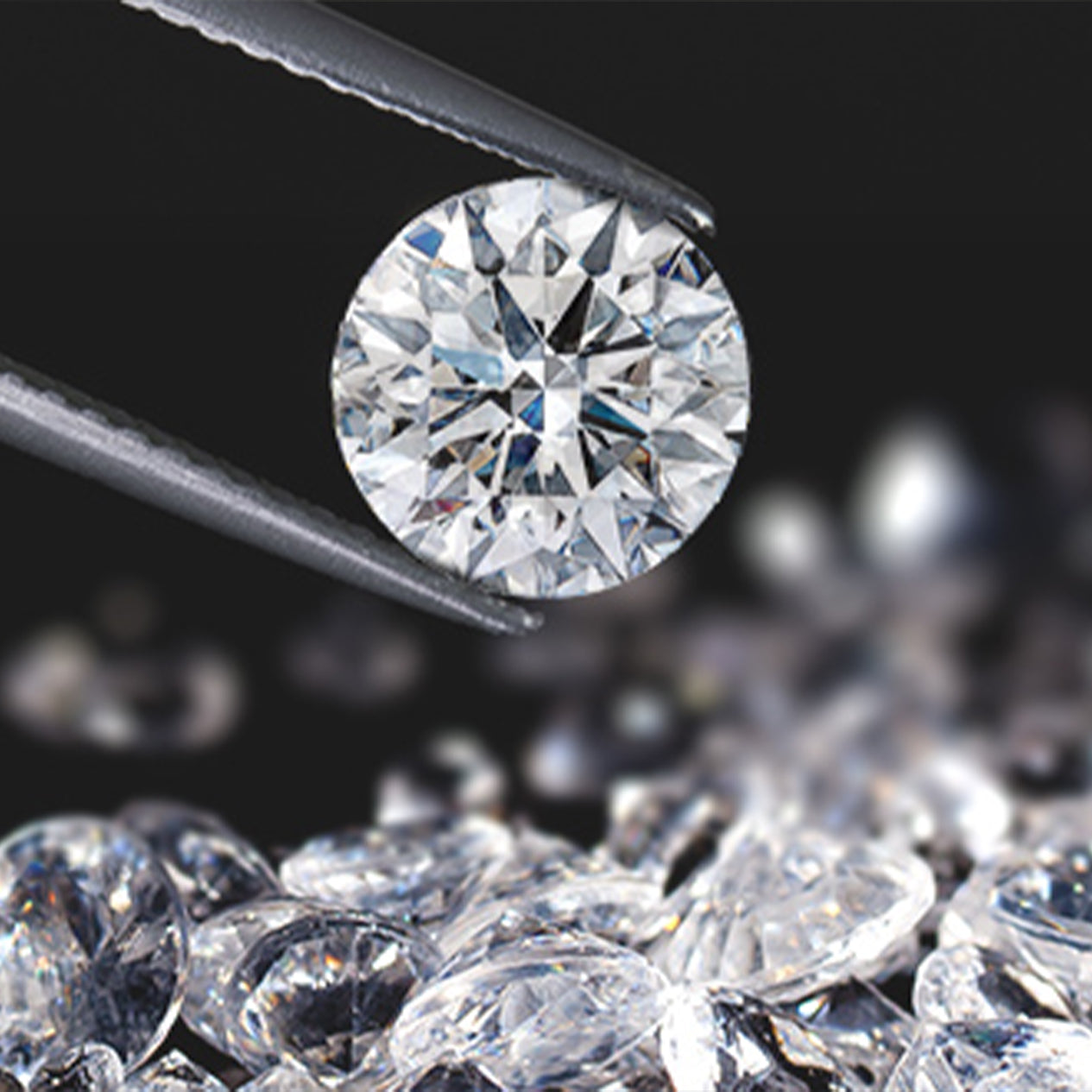
Even the smallest of mistakes can have a major impact on the quality of the cut of the final gem. At Shimansky, this process is completed in-house from beginning, to end, ensuring each and every step adheres to the Shimansky standard of precision and that unrivalled attention to detail is applied every step of the way.
Shimansky has a license to buy and polish rough diamonds – unique among jewellers. This ensures that only the finest, hand-selected diamonds are chosen for Shimansky jewellery creations. After the greatest quality rough stones have been selected, they are sent to the Shimansky Diamond Cutting and Polishing Workshop, situated in the Clock Tower at the world-famous V&A Waterfront in Cape Town. Here, the Shimansky master diamond cutters and polishers utilise their mastery to transform the rough gems into magnificent displays of light. The cutting and polishing is completed by hand, ensuring exact quality control, and preserving the ancient and fascinating art of cutting and polishing. Unrushed, Shimansky diamond cutters and polishers take their time with each and every gem, ensuring it reaches its maximum potential. State-of-the-art technology, combined with ancient cutting and polishing traditions yield mesmerising Shimansky diamonds that leave even those with a trained eye, speechless.
Want to learn more?
About Diamonds
Click to explore 'Famous Diamonds' and delve into the captivating stories behind iconic gems that have left a mark on history. Alternatively, uncover the mystique of diamonds with '25 Interesting Facts'—a journey through fascinating details that will enrich your understanding of these timeless treasures.
Shimansky Engagement Rings
Featured collection
